POSITIVE VISION
Ecocycle’s Tyson Ord details a national solution for a problematic waste stream.


FEATURES
Plastic-munching microbes
PV upcycling
Breaking the mould
Waste liquid, not fuel
PROUDLY SUPPORTED BY:
PMS 380 PMS 376 PMS 355 APRIL 2023


In this issue
Features
48
SOLAR FLAIR
Research by a Melbournebased team is the catalyst for a first-of-its-kind PV upcycling facility in the state.
POSITIVE ACTION
E-waste recycler Ecocycle is providing a national solution for a problematic waste stream.
“A LOT OF WORK IS BEING DONE BY GOVERNMENTS REVIEWING WHAT COULD AND SHOULD BE INCLUDED IN THE SCHEME, WHICH WILL ADD TO FURTHER TONNES OF E-WASTE BEING RECYCLED.”
- Tyson Ord, Ecocycle National Sales Representative
42 CELL RESPECT
Eriez-Australia has solutions for the unique challenges of battery recycling.
44 CHARGING AHEAD
B-cycle reflects on a positive first 12 months and the challenges to come.
46 PURE INTENTIONS
Pure Environmental breaks the mould when it comes to battery recycling.
48 SOLAR FLAIR
Research by a Melbourne-based team is the catalyst for a first-of-its-kind PV upcycling facility in Victoria.

50 RISE AND SHINE
Blue Phoenix Group helps Australia’s energy-from-waste industry take its first steps toward a circular economy.
52 RECYCLING REVELATIONS
RecycleSmart looks behind the curtain of two partners to highlight what happens to the waste it collects.
54 CRUSHING COMPACTION
Martin Hay and the MH Earthmoving team beat the drum for the Tana H380 landfill compactor.
56 FULL CIRCLE
ResourceCo takes on Australia’s offroad tyres with a new multimillion-dollar processing plant.
58 IT’S EASY BEING GREEN
Komptech’s Crambo shredders and Topturn compost turners go together like rock and roll.
60 COUNCIL IN FOCUS
Macedon Ranges Shire Council shares how the shire’s residents have become waste warriors.
Regulars
63 PRODUCT SPOTLIGHT
65 LAST WORD
16 THE BREAKDOWN Industry leaders have their say on current issues. 25 SLUDGEBUSTERS Sludgebusters’ DAF fleet of trucks covers a lot of ground across Central Victoria. 29 A NEW LEEF An Australian-designed wastewater treatment system tackles PFAS. 32 UP AND AWAY Global knowledge and a local workforce drives REMONDIS. 34 FOR GOOD MEASURE VEGA measuring tools are on the radar of municipal councils. 36 TAKING IT TO THE MAX CDE’s D:MAX wastewater processing plants set the standard for removing solids from liquid wastes. 38 PREDICT AND PROTECT ifm’s AI-assisted maintenance tool provides real-time insights. 40 BATTERY-POWERED Australia’s battery recycling sector is establishing itself as an innovation hub.
COVER STORY 19
www.wastemanagementreview.com.au / WMR / 3
From the Editor
Flushed with success
Keep your wipes out of pipes … stick to the three P’s – pee, poo and paper … are you flushing kidding me?
I admit to having a chuckle at media campaigns to draw attention to pipe works under pressure. I’ve also joined the collective ‘ewwws’ while watching television reports of giant fatbergs (a build-up of paper products along with fats, oils and grease that people pour down the drain), being pulled out of a sewer.
Whether you liked or loathed it, Sydney Water’s use of toilet humour did the job – it had people talking about a serious issue – wastewater.
Since the first civilisations were built next to water sources so rivers formed a natural sewage disposal, through to 1843 when the world’s first modern centralised sewer system was built in Germany, humans have recognised the importance of maintaining the health and wellbeing of the water environment.
These days the wastewater industry encompasses biological and chemical treatments, removal of contaminants, technology, and Artificial Intelligence.
Measurement technology is becoming more intuitive as production processes for wastewater treatment becomes more complex, particularly in municipal and industrial plants. There’s also an emphasis on processes and procedures that drive efficiencies.
This edition of Waste Management Review looks at just some of the players in an ever-changing landscape, from those on the road servicing rural communities and the equipment suppliers behind them, to the Australian team unlocking ground-breaking solutions for the global challenge of PFAS.
The Water and Carbon Group’s LEEF (Low Energy Evaporative Fractionation) System has proven so successful WCG is taking the solution to the United States market.
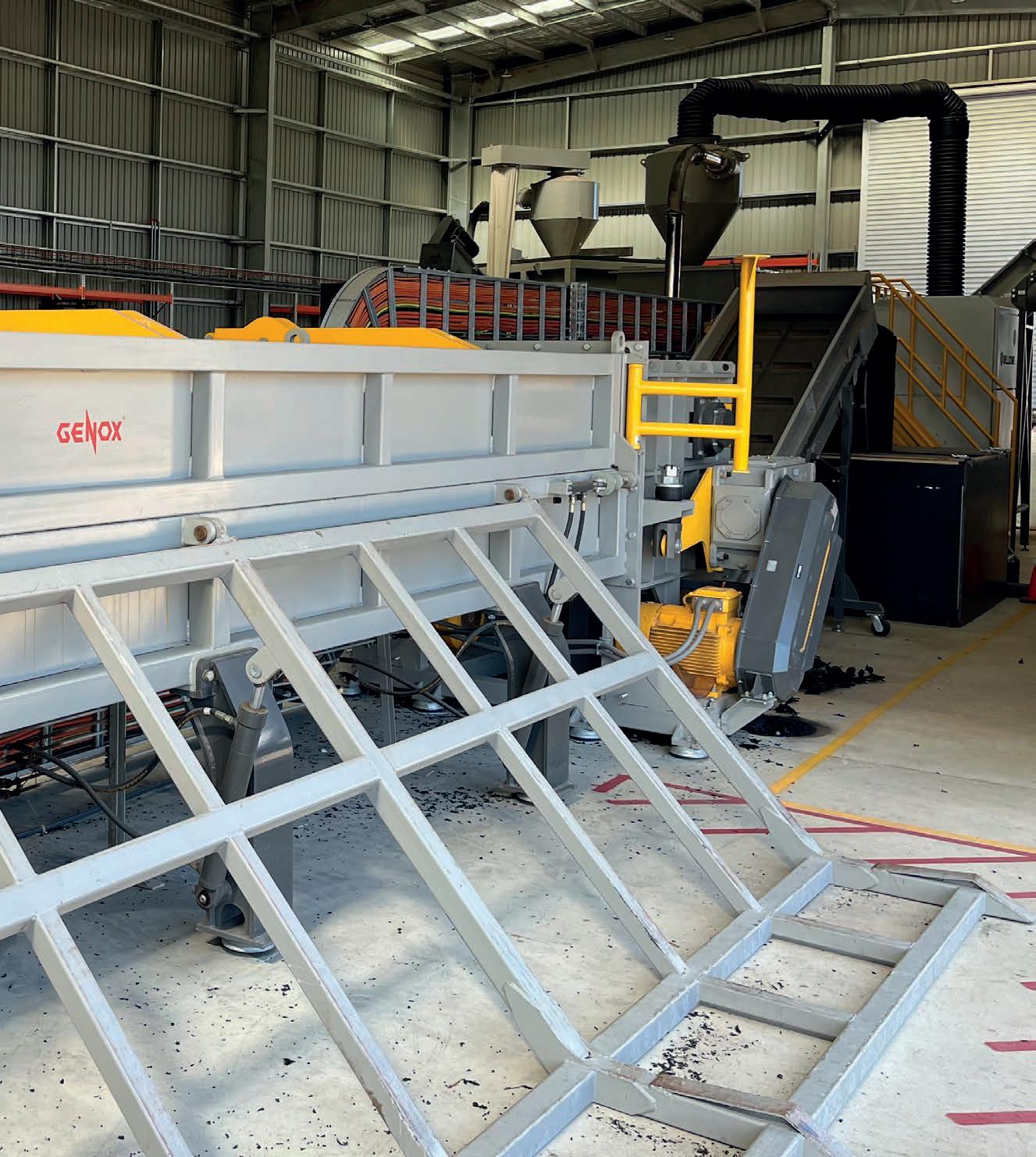
Tackling another global problem on home soil is specialist e-waste recycler Ecocycle.
The company has emerged as a major player in recycling within Australia and has invested heavily in best practice across the entire group to ensure it is well prepared to tackle rising e-waste streams. In this month’s cover story, Ecocycle Director Doug Rowe shares the company vision for long-term solutions and greater resource recovery.
CHIEF OPERATING OFFICER
Christine Clancy christine.clancy@primecreative.com.au
GROUP MANAGING EDITOR
Sarah Baker sarah.baker@primecreative.com.au
MANAGING EDITOR
Mike Wheeler mike.wheeler@primecreative.com.au
EDITOR
Lisa Korycki lisa.korycki@primecreative.com.au
JOURNALIST
Leon Cranswick leon.cranswick@primecreative.com.au
DESIGN PRODUCTION MANAGER
Michelle Weston michelle.weston@primecreative.com.au
ART DIRECTOR Blake Storey blake.storey@primecreative.com.au
DESIGN
Louis Romero, Kerry Pert
BRAND MANAGER
Chelsea Daniel chelsea.daniel@primecreative.com.au
p: +61 425 699 878
CLIENT SUCCESS MANAGER

Justine Nardone justine.nardone@primecreative.com.au
HEAD OFFICE
Prime Creative Pty Ltd 379 Docklands Drive Docklands VIC 3008 Australia p: +61 3 9690 8766 f: +61 3 9682 0044 enquiries@primecreative.com.au www.wastemanagementreview.com.au
SUBSCRIPTIONS
+61 3 9690 8766 subscriptions@primecreative.com.au
Waste Management Review is available by subscription from the publisher. The rights of refusal are reserved by the publisher
ARTICLES
All articles submitted for publication become the property of the publisher. The Editor reserves the right to adjust any article to conform with the magazine format.
COPYRIGHT

Waste Management Review is owned by Prime Creative Media and published by John Murphy.
All material in Waste Management Review is copyright and no part may be reproduced or copied in any form or by any means (graphic, electronic or mechanical including information and retrieval systems) without written permission of the publisher. The Editor welcomes contributions but reserves the right to accept or reject any material. While every effort has been made to ensure the accuracy of information, Prime Creative Media will not accept responsibility for errors or omissions or for any consequences arising from reliance on information published. The opinions expressed in Waste Management Review are not necessarily the opinions of, or endorsed by the publisher unless otherwise stated.
Lisa Korycki
4 / WMR / April 2023

GENOX’S NEW SHREDDER IS A PLASTIC PIPE’S WORST NIGHTMARE. THAT’S APPLIED THINKING. Call: Email: Visit: 03 9706 8066 sales@appliedmachinery.com.au appliedmachinery.com.au genoxmachinery.com.au Genox’s new J-Series pipe shredder is specificially designed for HDPE plastic pipes. With a unique multi-rotor design and long life counter knives, it quickly shreds different diameter and sized pipes. Like all Genox equipment it comes with the support and back up that only a true local machinery partner can provide.
Reviving soft plastics recycling

The Soft Plastics Taskforce has released a Roadmap to Restart, outlining the steps needed to launch a new supermarket soft plastic collection scheme, and the current state of play in the Australian recycling industry.
The Taskforce, made up of major supermarket retailers ALDI, Coles and Woolworths, has been tasked with developing an interim solution to restore community access to soft plastic recycling following the suspension of the REDcycle program.
Under the current plan, an initial in-store collection pilot is anticipated to launch in select stores in late 2023 – provided that REDcycle’s existing soft plastic stockpiles can be cleared prior. The new program would then be gradually rolled out nationwide next year.
While the Taskforce is working to launch in-store collections urgently, it is constrained by Australia’s limited access to domestic soft plastic recycling which can manage the “mixed polymer” soft plastics that are deposited by the public in supermarket collection bins.
At present, it would not be possible to recycle the volume of household
soft plastics collected in a supermarket program using domestic infrastructure. The Taskforce has plotted out the projected gradual increase in Australian soft plastic recycling capacity over the next year, as new operators launch, and existing processors expand.
From late 2023, the Taskforce will start a staged re-introduction of instore collections so that the volume of incoming household soft plastics does not exceed the amount that can be recycled.
A spokesperson for the Taskforce said: “For the vast majority of Australian households, the only avenue to recycle their soft plastic waste has been through the REDcycle bins available at Coles and Woolworths supermarkets.
“Restoring public trust in soft plastic recycling is paramount, and the Taskforce will reintroduce soft plastic collections when it can be confident that it will be properly recycled. We owe it to consumers to get this right.
“The best way to accelerate nationwide access to soft plastic recycling is through continued investment in recycling facilities to bring forward existing plans to expand domestic capacity.”
The current timeline to launch an in-store collection pilot by late 2023 is contingent on the ability to clear REDcycle’s existing stockpiles of soft plastic, which Coles and Woolworths have been granted control of.
Should new domestic processing capacity be taken up by the estimated 12,000 tonnes of stockpiled material for at least a year, the recommencement of in-store collections will be delayed.

Over the coming months, the Taskforce hopes to engage other retailers, e-commerce platforms and consumer brands that generate soft plastics to contribute to the development of the new in-store collection program.
The Australian Packaging Covenant Organisation estimates that less than five per cent of consumer soft plastic was collected by the REDcycle program. The Taskforce recognises the need for a long-term national soft plastic recycling strategy beyond its interim program.
The National Plastics Recycling Scheme (NPRS) outlines a new kerbside model to collect more household soft plastics. It has been developed by the Australian Food and Grocery Council with funding support from the Australian Federal Government’s National Product Stewardship Investment Fund.
The scheme is based on a model which would involve food and grocery manufacturers paying a levy to support the recycling of the soft plastics they create. It is currently being trialled in select areas.
News
6 / WMR / April 2023
Coles and Woolworths have made multimillion dollar commitments to a Soft Plastics Recycling Contribution Fund.
ENGINEERED FOR A CIRCULAR ECONOMY
CDE is here to transform waste materials into valuable recycled products. Our innovative wash plants give you the power to divert tonnes of waste from landfill and create new revenue streams. Move into new, high-value markets, like certified, in spec concrete sand, recovered from CD&E waste.

Visit cdegroup.com
brings us closer to reaching our target of diverting 80 per cent of waste from landfill by 2030,” Stitt said. So far, more than 50 projects across the state have

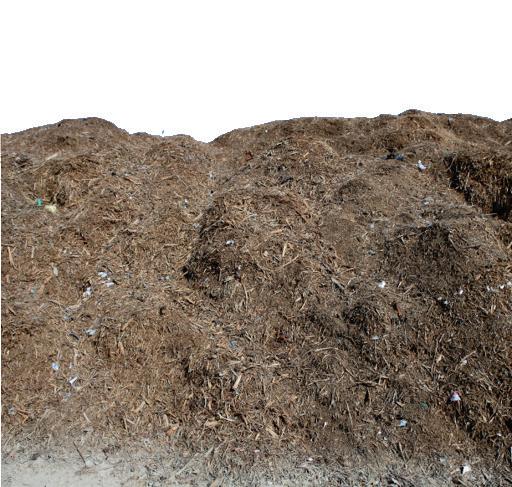
have prevented more than 55,000 tonnes of waste going to landfill and created 60 jobs.


Overall, the government has invested $515 million
waste and recycling system and a Victorian container deposit scheme.
Victorian councils and Alpine resorts can apply for grants.
8 / WMR / April 2023
Screening Output: up to 200 m3/hr

Engine: 55KW Diesel Motor
Trommel Length: 5500 mm
Trommel Screen
Screening Output: up to 180 m3/hr

Engine: 55KW Diesel Motor

Trommel Length: 4550 mm


Trommel Diameter: 2000 mm
Hopper Capacity: 6 m3



Up to 200 m³/hr
Speak to us today! 02 9457 9399 www.gcmenviro.com info@gcmenviro.com.au
GCM Enviro is a leading distributor for the latest in waste management equipement including state-of-the-art screeners, shredders and compost turners. GCM Enviro has a strong reputation for quality machinery and product support of top
quality equipment from word-renowned manufacturers.
Downer plant delivers more recycled materials for roads
The Tasmanian Government is expanding the use of recycled materials for roads around the state as a commitment to waste reduction in Tasmania.
Michael Ferguson, Minister for Infrastructure and Transport, said Tasmania has been using recycled rubber from truck tyres in road resurfacing on several resurfacing sites in the north of the state, including on the Bass, East Tamar and West Tamar highways.

“We know that about 1.3 million tyres reach the end of their life each year in Tasmania, most of which ends up in landfill or stockpiles. Some of these tyres are now being processed into crumb rubber and blended with bitumen for use as asphalt in the
state road maintenance program,” Ferguson said.

“We are seeing more recycled materials being used in road resurfacing and it was exciting to see construction well and truly underway at Downer’s $10.5 million asphalt manufacturing facility in northern Tasmania.”
Ferguson said construction of the asphalt plant has reached a critical point, with all establishment work complete and the main components being assembled. The components, weighing a combined 356 tonnes, were transported to the Mowbray construction site over two days thanks to 40 truckloads.
“It’s great to see this project well and truly coming to life. It’s a solid
commitment from an ASX Top 100 company to a long-term future in Tasmania which is wonderful for our state,” Ferguson said.
Since 2018 Downer has laid 11,079 tonnes of Reconophalt in Tasmania resulting in diversion from landfill of 9,503,000 plastic bag equivalents; toner from 277,300 toner cartridges; 2,652,000 RAP (recycled roads) used; 1108t of recycled asphalt paving material and 10.74 tonne of CO2e carbon saved.
Ferguson said the government would continue to work with industry to look for further opportunities to use sustainable products on Tasmanian roads.”
The new plant is on track to be commissioned in April 2023.

10 / WMR / April 2023 News
The new Tasmanian plant is on track to be commissioned in April 2023.
The ifm moneo platform goes beyond monitoring and detection, it gives you full visibility over your assets allowing you to perform maintenance at optimal times.

You don’t need a data scientist or analytics expert to know the condition of your machinery. moneo is a self-service tool that enables successful predictive maintenance programs through the help of AI methods.
Pump stations and submersible pumps face many challenges causing unplanned breakdowns. The moneo solution can detect the following issues:



n Predictive monitoring of bearings, gears and electric motors
n Rotating pump parts
n Pumps rotor and valves
n Water pressure, temperature and flow rate at the pumps outlets
n Faulty or damaged bearings
n Faulty or damaged seals
n Wear issues and rub issues
n Imbalance
n Cavitation
n Looseness
n Unusually high signatures in grinders and macerators 1300 365 088
| www.ifm.com/au
sales.au@ifm.com
Are you relying solely on historical data to inform decisions at your treatment facilty? Stand out from the rest with livestream analytics.






IT DOESN’T JUST MEASURE VALUES. IT HAS VALUES. THE 6X ®. AVAILABLE NOW! The VEGAPULS 6X: A radar level sensor that is not only technically perfect, it also takes the user into account. It’s easy to set up and at home in virtually any process or industrial environment. Made by a company that bases its decisions on values that are good for everybody. VEGA. HOME OF VALUES. www.vega.com/radar
Microbes dine out on plastic
CSIRO RESEARCHERS ARE ON THE HUNT FOR NEW RESOURCES IN NATURE TO TAKE ON PLASTIC WASTE.
Plastic waste management is a global crisis. Even some of the most remote places on Earth have been touched by plastic pollution.

About 6.3 billion metric tonnes of plastic waste is estimated to have been generated globally between 1950 and 2015, according to a 2017 peerreviewed article by R. Geyer and others in Science Advances
Of this, about 79 per cent has ended up in landfills or the natural environment, about 12 per cent has
been incinerated, and only about nine per cent has been recycled.
While there’s a growing social movement to address the overproduction of plastic, the sobering fact is that the amount of plastic waste being produced every year is continuing to grow at an ever increasing rate.
The CSIRO’s Ending Plastic Waste Mission is focused on changing the way we make, use, recycle and dispose of plastic and finding new resources in nature to break down plastic waste.
Dr Bronwyn Campbell, a postdoctoral fellow with the CSIRO, is working on developing plastic-munching microbiomes for biorecycling.
Her research is in CSIRO’s Environment Business Unit with support from the Environomics Future Science Platform, which applies genomics to environmental science issues such as detecting species, determining the ages of fish, and cleaning up waste.
FEATURE NEWS www.wastemanagementreview.com.au / WMR / 13
Soils and sediments that have been impacted by plastics, such as soils around landfills or sediments in urban streams, will be sampled for wild microbes.
Microbes hold vital roles in ecosystems, including decomposition.



“They have a lot to offer us humans and could help with challenging problems such as repurposing plastic waste,” Bronwyn says.
“My hope is that in the future, plastic waste can be broken down by microbes in large-scale bioreactors, and then used to make new products that are of equal or greater value to the plastics that went in.”
Bronwyn says that dozens of species of plastic-degrading microbes have already been isolated by other research teams, but the downside to using only one species is that it limits the range of plastics and plastic waste contaminants able to be recycled by them.
For example, a bacterium named Thermobifida cellulosilytica can degrade PET (polyethylene terephthalate) and PLA (polylactic acid); types of plastic that are often used as soft drink bottles or food packaging plastics, but it’s not able to degrade many other types of plastics.

“Plastic waste is usually mixed and contaminated. Sorting, where possible, adds time and cost to the recycling process,” Bronwyn says. “Thus, a
microbial community capable of filling different niches within the mixed plastic waste and supporting one another has the potential to reduce the need for waste sorting.”
Bronwyn will start field work this year to collect wild microbes within Western Australia, ideally within the Greater Perth region. She’s planning to sample soils and sediments that have been impacted by plastics, such as soils around landfills or sediments in urban streams.
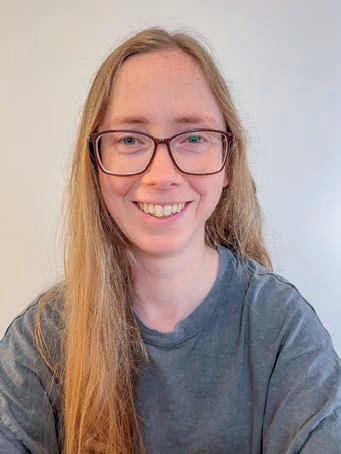
Once she’s sampled environmental microbial communities, Bronwyn will grow them on different types of plastics in the lab to see how they respond.
Both the microbial communities and the plastics that they’re degrading will need to be analysed after incubation. This will involve methods such as DNA sequencing, which can determine the abundances of all the different microbes in the communities, and help predict their roles in consuming the plastic.

From what she’s heard from other research teams working on plastic biodegradation, Bronwyn expects the main challenge will be getting the rate of degradation to be fast enough and complete enough to make it
an economically viable option for waste management.



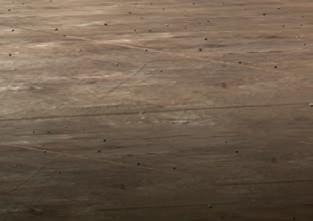

“Microbes are amazingly diverse and resourceful, but they don’t give a toss about profit expectations and deadlines in the waste management industry,” she says. “I expect the communities will need plenty of coaxing and manipulation if they’re ever going to reach that stage.”
Bronwyn says although research such a biorecycling is exciting, at this stage it’s more excitement than reality, and in any case, will not be a silver bullet solution for the world’s plastic pollution.
“The focus needs to remain on reducing the rate of plastic waste production where possible, as well as encouraging better end-of-life management of plastics by improving regulation of production and use.”
This research project is project is taking place on Whadjuk Nyoongar country at the CSIRO Floreat, Perth site. It is funded by CSIRO and Bioplatforms Australia and led by Dr Anna Kaksonen, with CSIRO collaborators Dr Andrew Warden, Dr Colin Scott, Dr Janet Reid, Dr Roger Mulder, and Dr Toni Reverter-Gomez. External collaborators on the project are Professor Richard Gross, Dr Yosephine Gumulya, and Professor Gene Tyson.
14 / WMR / April 2023 FEATURE NEWS
Collected wild microbes will be grown on different types of plastics in the lab to see what happens to the plastics.
Dr Bronwyn Campbell, a postdoctoral fellow with the CSIRO’s Environomics Future Science Platform.









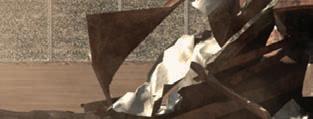







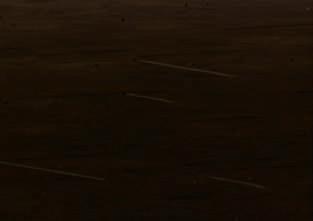

















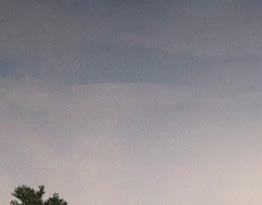




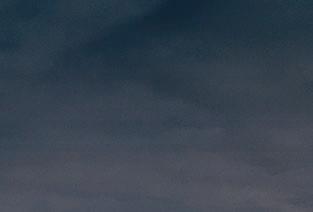








The Breakdown
Waste Management Review introduces ‘The Breakdown’ a new monthly column giving industry leaders and decision makers a chance to share their views on topics central to the sector.
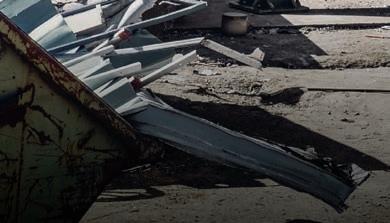



This month we asked: ‘What is the biggest challenge facing the industry in 2023?’
There is a fundamental lack of alignment between Australia’s environmental protection policies and broader circular economy principles, underpinned by a fragmented regulatory framework that identifies recyclable material as pollution rather than a resource. A nationally harmonised definition of ‘end of waste’ is essential, to support investment confidence in the recycling sector, encourage innovation and scale, and provide a more level playing field with virgin materials. At the same time, it is vital to ensure end markets for recycled material, without which the recycling system is not viable. This should include regulatory measures to support uptake of recycled content.

The biggest challenge facing the Australian organics recycling industry (AORI) in 2023 is the establishment of collaborative and consistent policy (including regulatory) settings. For the AORI to be successful and sustainable, government policy, legislation and regulations governing organics industry processors must be aligned to national and state strategic objectives for landfill and waste reduction. This must include consistency and fairness in the management of contaminants including forever chemicals (e.g., PFAS), plastics and other potential problematic contaminants. It should, ideally, include clear and consistent guidelines (supported by regular and consistent communication and education) for what can go into the green organics bin and what cannot, especially with the increasing rollout of FOGO by local government jurisdictions
Every corner of this industry has its own special challenges but I think it can be summed up in one word, Education; whether that be:
• the general public to know what is recyclable and what isn’t or what bin to put their item in.
• organisations understanding the new regulations, their requirements especially when submitting permissions
• the regulators understanding the industry and processes they are trying to regulate. There is so much greenwashing and misinformation floating around within industry and the general public, even then most well-meaning and knowledgeable waste professional can become misguided due to misinformation and greenwashing.
As an industry, we face many challenges, but one challenge we can all impact is building public sentiment on recycling. Our research shows that 30% of Victorians think their recycling ends up in landfill, and 88% of Victorians state they don’t know enough about how recycling is conducted.
We can all positively impact this. We can create educational resources and content to show the community how we recycle their materials, so they have trust in the industry. Together, we can help people have a better understanding of the work we do.
If you or someone at your organisation is an industry leader and would like to be a part of this monthly column in 2023, please get in touch with Editor, Lisa Korycki lisa.korycki@primecreative.com.au
 Suzanne Toumbourou Chief Executive Officer Australian Council of Recycling
John McKew National Executive Officer Australian Organics Recycling Association
Brett Lemin Executive Officer Victorian Waste Management Association
John McCluskey GM Commercial Repurpose It
Suzanne Toumbourou Chief Executive Officer Australian Council of Recycling
John McKew National Executive Officer Australian Organics Recycling Association
Brett Lemin Executive Officer Victorian Waste Management Association
John McCluskey GM Commercial Repurpose It
OPINION 16 / WMR / April 2023
The LH 26 M Industry
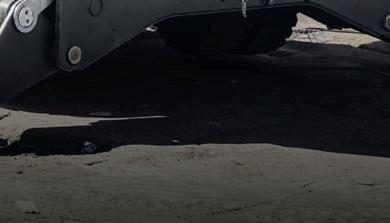
Litronic
Robust, compact and extremely fuelefficient, the LH 26 delivers tremendous performance in various areas of material handling. Equipped with our latest engine and hydraulic technologies, the all rounder is available in numerous configurations and adaptable to all environments.
www.liebherr.com




Visit us at COFFS WASTE CONFERENCE 09 – 11 May 2023 Opal Cove Resort, Coffs Harbour, NSW Booth 11
Treasure hunter
machine Liebherr-Australia Pty Ltd • em-sales.las@liebherr.com • www.facebook.com/LiebherrConstruction www.linkedin.com/company/liebherranz • www.liebherr.com.au
Material handling
THE PHOENIX HAS LANDED IN AUSTRALIA

The Phoenix is an extraordinary mythical creature. At the end of its life when just ashes remain, something magical happens. New life merges out of something that seems lifeless. What we consider to be the end, suddenly transforms into a new beginning. We give ash a new life in the real world.
What we do
The ash in our line of business comes from the new Energy-from-Waste facility Avertas Energy. Incineration of municipal solid waste (MSW) is an effective way to reduce waste volume and reduce our reliance on fossil fuels for energy.

How we do it
We process the remaining ash and extract valuable resources. With our state-of-the-art technology we recover metals to produce a secondary aggregate used for civil construction work. Environmental protection is at the forefront of our day-to-day operations. We assure the proper use of aggregates, limiting the impact on the environment.
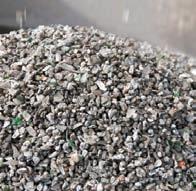

Why we do it
We believe our work is only valuable if it contributes to a better future. We prevent landfilling and the negative impacts associated with the extraction of virgin raw materials by producing a secondary aggregate that contributes to the circular economy.
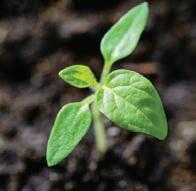 Mr Ian Lynass, Managing Director Ianlynass@bluephoenix-group.com
Mr Ian Lynass, Managing Director Ianlynass@bluephoenix-group.com
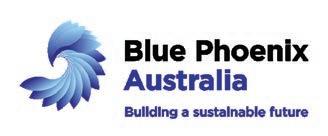 Blue Phoenix Australia
Blue Phoenix Australia
0418 290 080 | www.bluephoenix-group.com
Proof positive
E-WASTE RECYCLER ECOCYCLE IS PROVIDING A NATIONAL SOLUTION FOR A PROBLEMATIC WASTE STREAM.
E-waste is growing at three times the rate of any other waste stream, fuelled by consumer demand for the latest technology.
The Global E-Waste Monitor 2020 reported that e-waste increased by 21 per cent in the five years to 2019. A figure that will grow exponentially in the years ahead, according to Doug Rowe, Director of specialist e-waste recycling company Ecocycle.
Doug says that while there’s mounting evidence of the environmental impacts of e-waste, only 17 per cent is recycled globally.
Part of the challenge is the diverse product range that falls under the e-waste banner.
“The challenges are immense with mixed materials, the influx of batteries into all sorts of e-waste, and the vast range of shapes and sizes of material that has to be handled,” he says.
Ecocycle has emerged as a major player in recycling within Australia with the establishment of Ecobatt – recycling all types of household, portable, electric vehicle and storage batteries; and Eco E-waste – a specialist recycling company for electrical appliances, computers, televisions, monitors and laptops.
The company has expanded its investments in the mining, gas, and petroleum industries with further work being carried out in Western Australia, including a new site chosen for expansion in the state.

And Ecocycle is the only company to be fully licensed by the environmental protection agencies of each state to handle the entire process of recycling waste containing mercury.
Doug says mercury needs to be respected, but few mercury fluorescent tubes are treated correctly and the televisions, monitors and laptops that
they come from are not processed as they should be or recycled correctly.
He has praised Australia for signing up to the Minamata Convention, which now requires all mercury to be retired, which means it can no longer be sold or reused. In a step forward, a plant is being built overseas and will be commissioned in Western Australia during the first half of 2024, to convert elementary mercury into a product that can be retired.
SHOW OF CONFIDENCE
In July 2022, Ecocycle was included in the National Television and Computer Recycling Scheme (NTCRS); established in 2011 to give households and small businesses free access to industry-funded collection and recycling services.
Tyson Ord, Ecocycle National Sales Representative, says having the NTCRS backing shows confidence in

COVER STORY www.wastemanagementreview.com.au / WMR / 19
Eco E Waste has a national reach with trucks purposebuilt for transporting e-waste.
Ecocycle’s national reach, and its ability to responsibly collect, process and separate the various grades of e-waste. It was important for the group becoming involved, as well as helping increase its presence in this field.

“A lot of work is being done by governments reviewing what could and should be included in the scheme, which will add to further tonnes of e-waste being recycled,” Tyson says. “The South Australian government banned e-waste going to landfill in 2013, the Victorian government in 2019 and the Western Australian government is looking at a ban to landfill as we speak. We believe other states could be following.
“Ecocycle looks forward to working closely with the NTCRS and ensuring we stay at the forefront of technological developments to keep us that one step ahead.”
TECHNOLOGY-DRIVEN
While older technology such as eddy currents still has a place, Doug says processes for sorting e-waste are advancing with robotics, Artificial Intelligence (AI), laser induction (LIBS) and X-ray.
These new, specialised systems can recover metals down to one millimetre and sort the metals into their various grades – 300 series stainless-steel from 316; aluminium extrusion and cuttings from aluminium castings; copper from brass, PVC cable, zinc, and printed circuit boards. The list goes on.
“Even one-and-two-dollar coins can be separated and recovered,” Doug says.
Ecocycle has introduced advanced technology to its purposebuilt e-waste processing and separation plant. Set up over three levels
and about 150 metres long, 40 metres wide and 16 metres at the highest point, it’s a huge up-front investment but one the company felt was needed to ensure it is as efficient, productive, and cost-effective as possible.
“Ecocycle is here for the longterm,” Doug says.
“Running consistently at 25 tonne per hour we have the capacity to process large tonnages with the highest possible non ferrous and precious metal recoveries.
“With the possibility of further e-waste to come onto the market in 2025, we wanted to be well prepared and have a sophisticated separation line that can handle the tonnage and recover all metals down to the smallest of fractions.”

20 / WMR / April 2023 COVER STORY
E-waste is growing at three times the rate of any other waste stream.
In July 2022, Ecocycle was included in the National Television and Computer Recycling Scheme.
NATIONAL APPROACH
Tyson says Eco E Waste is unique in that it has a national reach with trucks purpose-built for transporting e-waste.
Every state will have a 14-pallet tautliner truck with an automatic mezzanine deck, designed to simplify the loading process and double the carrying capacity. In some states there’ll also be semi-trailers with auto mezzanine decks.
The trucks were ordered more than nine months ago and when they are rolled out in August 2023, will boost Ecocycle’s fleet to more than 75 vehicles, including semis, crane and hook-on trucks, tailgate loaders and vans.
Most of the vehicles are Environment Protection Authority licensed and registered to transport dangerous goods. The drivers are dangerous goods registered.
“All these vehicles are tracked and traced with fleetmatics so at all times we know where our drivers are, where they have been and the route taken,” Doug says.
“We get alerted as to driver behaviour and pride ourselves on having clean ‘green’ trucks that portray a professional image.”
It’s not just the trucks, but bins, people, and systems that need to be recorded, controlled, and balanced in every state.
The various government bodies around Australia are doing more than ever to ensure e-waste, and indeed all waste, is transported, handled and recycled correctly.

Regulations change from state to state, resulting in different licensing, financial assurances, controls, and conditions across the country.
“The commitment is monumental when you consider the infrastructure and back-up required to operate an efficient, professional Australia-wide operation,” Doug says.
It’s a commitment, he says, worth pursuing.
A MIXED BAG
Ecocycle aims to be involved in some form of processing of e-waste in every state. It has set a target to remove and recover all steel, which can account for up to 50 per cent of the weight, from all e-waste it collects. The balance will be further processed to recover non-ferrous and precious metals and plastics.
Doug says mixed plastics are challenging to recycle, requiring a large commitment and investment to do it efficiently and successfully. While there are some rudimentary pieces of plant and equipment available, he says more is needed to be done in this space.
Ecocycle sister company Recycal has plans to install a plastic to diesel plant in Rocherlea, Tasmania to handle the mixed material within the plastic chain.

“We have started talking with a supplier of plastic recycling equipment that has the technology to deliver a complete plant that will separate and convert recovered plastics with a higher return into valued-added end products for industry,” Doug says.
“It is a large and sophisticated plant with moulding and extruding
www.wastemanagementreview.com.au / WMR / 21
Inside the mercury plant in Western Australia.
equipment to manufacture very clean, separated and known products.”

The various plastics found in e-waste makes the recycling process problematic with brominated flame retardants (BFR) needing special attention. Plastics with BFRs, mixtures of man-made chemicals that are added to products to make them less flammable, have presented challenges both overseas and locally as regulations regarding their recycling have changed.
Several eco-efficient waste management options, such as incineration with energy recovery, are popular solutions being adopted throughout Europe. While energy-fromwaste plants are currently not commonplace in Australia, there is progress. The first plant is being built in Kwinana, Western Australia and there are others at the planning stage.
Doug believes they could be an answer for some of the BFR plastics moving forward but he’s aware any sustainable outcome for recycled plastics is a longterm prospect. Any plant built must also be able to handle a range of fillers, fibres and powders used in the making of various plastic products.
“The plant design can take months with lots of back and forth,” Doug says. “From the agreement stage, it can take up to 12 months to get the equipment in Australia, several months to install and wire, and then weeks of commissioning.
“It’s not something that will happen tomorrow.”
Doug says the investment in best practice across the entire Ecocycle group will give clients assurance they are dealing with an organisation that handles their waste material without
using third and fourth parties. Because material is recycled using shredding and milling, there is also no chance recycled equipment will find its way back onto the market or in Third World countries that may have exposure to slavery challenges.
“We have great reporting and a new and exciting ability to chat about carbon insetting,” Doug says.
“We would welcome the larger importers of e-waste into Australia to visit Ecocycle and see everything we do.

“It might cost a bit more, but they can rest assured knowing they’re dealing with a company that can give them the comfort of a complete end-to-end recycling solution with great reporting.”
For more information, visit: www.ecocycle.com.au

22 / WMR / April 2023 COVER STORY
Ecocycle has invested in best practice across the entire group.



Pure unites people and technology to transform the circular economy through advanced resource recovery.
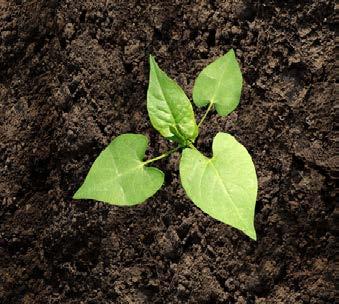
We strive to be Australia’s leading resource recovery specialist, providing viable solutions to meet our customers needs.



pure-environmental-pty-ltd 10/333 Queensport Rd North, Murarrie QLD 4172 T: 1300 652 774 E: info@purenv.au W: purenv.com.au pure transforming the circular economy
Waste liquid, not fuel
SLUDGEBUSTERS HAS BEEN KEEPING REGIONAL VICTORIA SLUDGE-FREE SINCE 1989. FOUNDER GREG BUTLER DISCUSSES THE BUSINESS, AND THE FLEET OF DAF TRUCKS POWERING IT.

Greg Butler’s family first entered the liquid waste game back in 1966 when they purchased their first vacuum tanker to service the family piggery.
Greg took this to the next level in 1989 when he started Sludgebusters, which has grown into one of Central Victoria’s leading liquid waste businesses.
“Servicing domestic septic tanks was what we started off with, and that’s still the core of the business,” Greg says. “But today, if you have any liquid waste issues, we can sort it out.”
Now with 10 employees – including Greg’s son Harrison – Sludgebusters offers a full range of liquid waste and related services including septic and water tank cleaning, servicing and cleaning of domestic wastewater treatment systems, hydro excavation, and under shearing shed clean outs.
Whatever the job, the primary tool of the liquid waste trade is the vacuum tanker. Sludgebusters now runs a fleet of six of these tankers, which are mounted to DAF trucks supplied by PACCAR Australia.
Greg says he was introduced to DAF trucks through the team at Vacuum Truck Supplies in Mansfield, Sludgebusters’ vacuum tanker supplier.
“Adam at Vacuum Truck Supplies told us DAF were well suited to their builds,” he says. “And we quickly figured out that they suited our application too.
“We purchased our first DAF about 10 years ago, and had a really good run with it, and good support over the journey. That’s why I’ve kept purchasing them.”
The latest models in the fleet are two DAF CF450 FAT 6x4 rigid trucks, of which Greg says Sludgebusters has another soon to be delivered, and another on order.
THE DAF DIFFERENCE
Greg says there are a range of reasons Sludgebusters has stuck with the DAF brand in recent years.
“One thing that really stands out with DAF is the fuel economy,” he says.
“Good fuel economy is always the first thing that DAF salespeople want to spruik – but that’s because it’s true.”
With the CF450, this is achieved in part by PACCAR MX-11 Euro 6 engine, as well as the CF range’s lighter tare build of the DAF CF range.
“Our vacuum tankers are pretty heavy, and that’s before you put 10 tonnes of waste in them,” Greg says. “But the lighter tare you start off with, the better off you are.”
Greg says Sludgebusters has always endeavoured to keep ahead of the technology curve as far as tracking data – something he says is becoming more the norm across the waste industry.


FEATURED TOPIC – WASTEWATER www.wastemanagementreview.com.au / WMR / 25
One of Sludgebusters’ DAF CF450s fitted with a liquid vacuum tanker.
“Like with all parts of this industry, rules are getting tighter –things have to be trackable, and we’re expected to be more accountable,” he says.”
One way DAF trucks supports customers in this regard is through the PACCAR Connect-powered Driver Performance feature, which coaches drivers on driving behaviours to help optimise fuel efficiency.
“We can keep track of how drivers are managing fuel economy on a particular journey,” Greg says. “We can closely
monitor fuel usage, which can also help us work out pricing.” Greg says given the ground Sludgebusters covers across Victoria, this can make a big difference to the bottom line.
Safety is another theme that runs through the DAF CF truck range. Drivers can enjoy the peace-of-mind offered by newly optimised side mirror placement, as well as side cameras to cover any blind spots when changing lanes.
“Having good backup support is also important,” Greg says. “The few times
we’ve had something go wrong with a DAF, we’ve been able to sort it out quickly and get back on the road.”
Greg says that while many waste streams in Australia are evolving and changing, the business of liquid waste isn’t likely to dry up any time soon –particularly in regional areas.



“Once people have septic tanks installed, they often stay there for 50 or 60 years,” he says.
“The only big change that has come in over the past 20 years is home wastewater treatment systems. They’re bigger and a bit more complex, but they still need de-sludging every three or four years.
“So, as long as people keep flushing, we’ll be there. Your waste is our bread and butter.”
For more information, visit: www.daf.com.au
26 / WMR / April 2023 FEATURED TOPIC – WASTEWATER
“Good fuel economy is always the first thing that DAF salespeople want to spruik – but that’s because it’s true.”
Greg Butler Sludgebusters Founder
Sludgebusters’ DAF fleet covers a lot of ground across Central Victoria.
BC 773 RB-5: THE MULTITOOL
AMONG REFUSE COMPACTORS

The BC 773 RB-5 compactors have been specifically designed to conquer the extreme conditions found on landfills – which makes them your perfectly reliable and efficient partner on site.

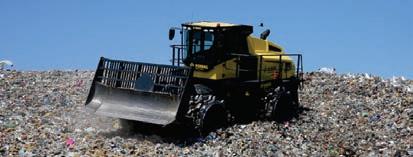

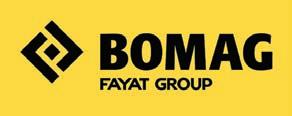

Our intelligent machine concept sets new standards in its class: All compactors come with a multitude of smart major and minor features that make work easier and more efficient, such as a hydraulically operated engine hood and high air intake.
Additionally, our new RS variant offers you a real multitool among compactors, with high lift capacity, fitted with a 4 in 1 combination trash bucket. It enables all-in-one compaction, loading and transporting –saving you valuable time and costs.

Brisbane | Sydney | Melbourne Adelaide | Perth tuttbryant.com.au 1300 658 888 Follow us on:
Sept 2023
Melbourne’s leading construction and major infrastructure event

Inside Construction Expo will deliver

Targeted messaging in over 19 industry-leading publications that reach more than 80,000 decision makers across multiple sectors
Digital communications to 28,000+ engaged readers
Premium networking opportunity with industry leaders at the Foundation Awards gala dinner
insideconstructionexpo.com.au
EXHIBITION SPACE NOW ON SALE
Melbourne
20-21
Convention and Exhibition Centre
Turning over a new LEEF
A WASTEWATER TREATMENT SYSTEM DESIGNED BY AUSTRALIA’S WATER AND CARBON GROUP IS SET TO TACKLE THE GLOBAL PFAS CHALLENGE HEAD-ON.

Australian environmental engineering and construction firm, the Water and Carbon Group (WCG) has developed a treatment system proven to remove PFAS (per- and poly-fluoroalkyl substances) from wastewater.
The LEEF (Low Energy Evaporative Fractionation) System® is centred around foam fractionation to remove PFAS contaminants by harnessing air, and the chemical properties of PFAS itself, all while using minimal energy, no chemicals or consumables.
Jai Sudholz, Water and Carbon Group Pre-Contracts Manager, says

the system is a remedy to a growing but still widely under-recognised contamination problem.
“Our treatment system is designed to make a lasting, positive difference to people and environments, while helping operators and industries meet the PFAS challenge head on,” he says.
Often dubbed the ‘forever chemical’, PFAS is a global pollution challenge. Widely used for its water, oil and stain resistant properties, PFAS chemical chains don’t break down easily, and hence bioaccumulates in the environment and human bodies. They have been detectable in the bloodstream for years
after exposure, and are linked to a range of health risks in humans, with the longterm ecological and intergenerational effects being a cause for alarm.
Backed by a team of process and ecological engineering specialists, as well as environmental scientists, project and construction managers, WCG has been at the forefront of sustainable engineering within the wastewater, environmental and remediation industries since 2007.
Jai says the LEEF System was initially developed to address PFAS contamination in landfill leachate but the technology is both scalable

www.wastemanagementreview.com.au / WMR / 29 FEATURED TOPIC – WASTEWATER
The LEEF System is scalable and adaptable to a range of PFAS contaminated waste streams.
and adaptable to a range of PFAS contaminated waste streams.
The landfill leachate showed high concentrations of a range of contaminants that rendered conventional removal methods such as granular activated carbon (GAC), ion exchange resins, and reverse osmosis (RO) ineffective or cost inhibitive.
“The concept of the LEEF System is to enable a cost-effective treatment method that reduces the production of waste at a lower energy consumption rate than other methods,” Jai says.
The key to the LEEF System solution is that PFAS are surfactants that can produce a stable foam when mixed with air and water. This characteristic is the reason PFAS is effective as a firefighting foam to suppress certain types of fire.
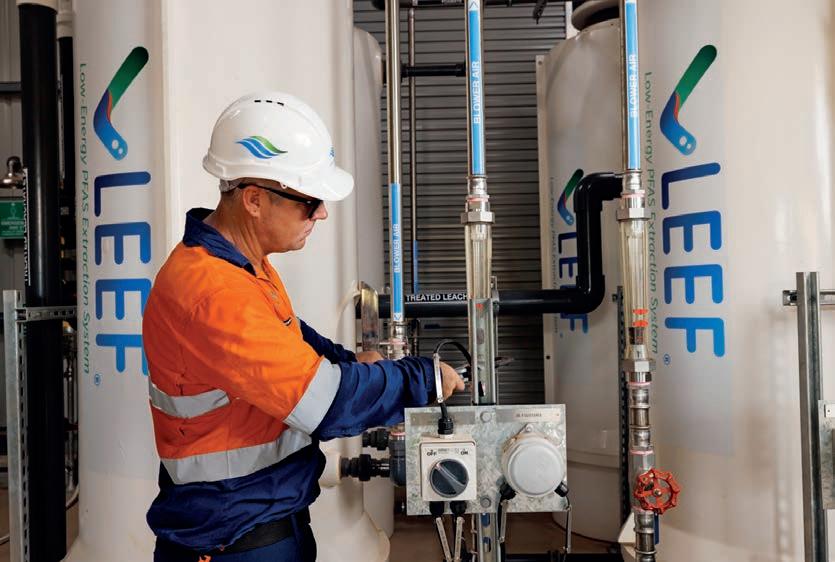
Jai says the LEEF System takes advantage of the way PFAS coats air bubbles in a process called foam fractionation. By adding air in a controlled setting, PFAS compounds will attach to bubbles and rise to the top where they can be skimmed off and separated from the wastewater.
“By using foam fractionation, the LEEF System has been shown to remove PFAS compounds up to the limits of detection,” Jai says. “The system typically does not require pre-treatment for direct PFAS removal, while zero chemicals or consumables are used throughout the process, resulting in a simple-to-operate, low-maintenance system.



“Another advantage of the LEEF System is its modular design, which can be easily scaled and customised to meet any volume requirements.”
The Shoal Bay Waste Management Facility receives more than 180,000 tonnes of waste each year from 164,000 residents who live in the greater Darwin region.
Due to the region’s rainfall, the facility also generates large volumes of leachate that must be treated and kept out of the surrounding environment, which includes ecologically important eucalypt woodland, coastal wetlands, and wildlife habitats.
In 2019, the City of Darwin awarded WCG a $13.2 million contract to design, construct, and operate a leachate treatment plant solution for
30 / WMR / April 2023 FEATURED TOPIC – WASTEWATER
The Water and Carbon Group PFAS removal system harnesses air and the chemical properties of PFAS itself.
DO YOU KNOW A DRIVER OF CHANGE?

WOMEN IN INDUSTRY NOMINATIONS ARE NOW OPEN. Now is your chance to nominate an industry leader who you believe is advocating for positive change and deserves to be recognised.

WOMENININDUSTRY.COM.AU








THURS 8 JUNE 2023
The Women in Industry Awards recognise outstanding women leaders from across Australia’s industrials sector.
MHD Supply Chain Solutions PROUDLY PRESENTED BY
SPONSORED BY Australia
Up and away
REMONDIS’ WASTEWATER MANAGEMENT IN AUSTRALIA IS GOING FROM STRENGTH TO STRENGTH, DRAWING ON A GLOBAL BANK OF KNOWLEDGE AND A LOCAL WORKFORCE.
Ayear might seem inconsequential when you’ve been at the forefront of global wastewater management for many decades, but there have been milestones aplenty for REMONDIS in Australia over the past 12 months.
Since its commissioning in May 2022, REMONDIS’ wastewater treatment facility at Northgate in Brisbane has gone from strength to strength. The facility is licensed to process J120 waste oil/water, hydrocarbons/water mixtures or emulsions and has recently commenced accepting waste oil from third parties with capacity for 11.5 million litres per annum.
The Northgate facility operates alongside REMONDIS’ existing waste transfer station. Servicing south-east Queensland, its configuration allows for treatment of standard commercial wastewaters with scope for growth into complex categories of commercial and industrial wastewater.
As with REMONDIS’ installations globally, emphasis has been placed on
processes and procedures that drive efficiencies from the word go, with flexibility to ramp up as time progresses.
It has also been fertile ground for learning and development, with REMONDIS drawing on international expertise to strengthen local knowledge of world’s best practice in commercial wastewater treatment, enabling local teams to extract the most out of the plant, thereby delivering cost-efficient outcomes for clients and maximum environmental benefit.

“In the past few months, we’ve been undertaking detailed checks and audits to see how we can make the facility even more efficient,” says Sebastian Weil, REMONDIS Aqua Australia Director.
“Striving for efficiency at such facilities is business as usual for REMONDIS, a job that never really finishes.
“There’s an onus on everyone from engineering through to operations to look for improvements as the site evolves.
Such team efforts are already resulting in more efficient unloading times, higher throughput, improved effluent quality and better separation of waste oil – it’s been a great team effort.”
GLOBAL KNOW-HOW
One REMONDIS advantage is being able to draw on expertise and synergies from other arms of the entire REMONDIS group, including REMONDIS Australia’s Integrated and Managed Services division (REMONDIS IMS), an environmental managed services provider for complex waste management, specialist recycling and commodity streams, site remediation and special projects.
Local collaborations have delivered a wider suite of services to REMONDIS’ water management service clients, that include Gladstone Regional Council and Aurizon.
Globally, REMONDIS is a leading provider of municipal and industrial water
FEATURED TOPIC – WASTEWATER 32 / WMR / April 2023
REMONDIS Aqua wastewater treatment plant in Cottbus, Germany. (©U.Mertens)
management services, providing sustainable water supply, wastewater treatment and sewage sludge recycling solutions. Innovative solutions include the awardwinning TetraPhos Process for recovering phosphorus from sewage sludge.
Research and development are constantly being driven throughout the REMONDIS Group.
“There are many emerging ideas and technologies we can cherry-pick, from across Australia and from our global network,” Sebastian says.
“The more we can tap into our bank of know-how the more we can look at passing cost savings onto customers, delivering better environmental outcomes, and strengthening our position in the market generally.”
An area of focus at the Northgate facility is expansions to meet market demand for the handling of difficult-to-treat industrial wastewaters and sludges. On this front, the team is making plans to commission new treatment lines at the facility by the end of 2023.
“As industry becomes more conscious of its environmental footprints, the
demand for local science-based solutions for complex industrial wastewaters grows,” says Thomas Hallam, REMONDIS Aqua Australia Operations Manager.
“Gone are the days of wastewater disappearing into the back blocks or being hauled long distances by road to be dumped in rural areas. REMONDIS’ clients require a progressive, proactive approach.”
‘HOME-GROWN’ TRAINING
Another priority is ensuring skilled workers are on hand to keep the facility and future facilities running, amid a national worker shortage that is affecting many parts of industry.
To address that problem, REMONDIS has looked within, going all out with inhouse training programs.
“Another benefit of being a big global player is that we can tailor-make and mobilise training initiatives to sites such as Northgate,” Thomas says. “Determined to be part of the skills shortage solution, we’ve established an on-site operator training program that is supervised by senior operators and engineers.
“We’re currently sponsoring two trainees who will end up with certification in water and wastewater treatment operations, leaving them with a strong combination of hands-on experience and e-learning.
“Once these first round of trainees have completed their courses, they’ll take up full-time operator roles at other sites, where their training can continue as the business continues to grow. The ‘home-grown’ approach to training is a big win-win for our employees and our clients.”
REMONDIS Australia’s wastewater team provides water supply and wastewater treatment solutions for public and privateowned infrastructures – including all aspects of operations and maintenance, engineering design concepts, processing methodologies and regulatory compliance.
Across Australia, REMONDIS has more than 100 on-road liquids assets, ranging from mini liquid tankers to B-double liquid tanker combinations, and heavy industrial vacuum equipment for hydro excavation and drain cleaning.
For more information, visit: www.remondis-australia.com.au

www.wastemanagementreview.com.au / WMR / 33
REMONDIS Australia’s Northgate water treatment plant was commissioned in May 2022.
For good measure
VEGA MEASURING TOOLS ARE ON THE RADAR OF MUNICIPAL COUNCILS KEEN TO SIMPLIFY COMPLEX WASTEWATER TREATMENT PROCESSES.
Wastewater treatment plants have traditionally relied on ultrasonic transmitters, bubblers, and floats. But what were once considered cutting-edge technologies, are being superseded.
As production processes become more complex in municipal and industrial wastewater treatment plants, it’s important that measurement technology used to control and monitor the processes is understandable and intuitive, says John Economos, VEGA Business Development Manager.
He says VEGA has set itself the goal of developing measurement technology that is easy to install and operate and offers maximum safety and reliability.
“Wastewater treatment plants around the world rely on VEGA measurement technology because they place importance on high plant availability, maintenance-free operation and accurate measurement data as the basis for automatic control of the various process stages,” John says.
“We’ve been supplying level and pressure sensors for containers, pipelines, filters, and reservoirs for decades.
“For more than 60 years now, solutions to demanding measuring tasks are being conceived and brought to realisation.”
VEGA’s pioneering approach to water treatment and industry technology is making waves across multiple municipal areas, as highlighted by a project at Talwood Water Treatment Plant for the
Goondiwindi Regional Council. John says the project was an example of a collaborative working relationship that has developed since 2015 when VEGA technology helped the treatment plant out of tight spot.
Goondiwindi Regional Council, in the Darling Downs region of Queensland, operates seven water treatment plants, five sewerage plants and 19 sewerage pump stations, all of which now have VEGA instruments installed.
The instruments are used for level and pressure reading at new and upgraded pumping stations, sewerage pumping stations, chemical tanks, and solids detection in liquids. Items include free-to-air radar sensors, hydrostatic transmitters, vibrations sensors and pressure transmitters.
John says the VEGABAR 38, is used extensively across Goondiwindi’s water treatment plant, and is a universal pressure transmitter with ceramic measuring cells for measuring gases, vapours and liquids up to 130°C.

While Goondiwindi previously used hydrostatic readers at its pump stations, the council began a process to replace them will radars. John says the radars provide simpler installation and maintenance, with accurate and up-todate readings.
Goondiwindi also operates several VEGAPULS 31s, ideal for non-contact level measurement of liquids and bulk solids in simple applications.
“It is particularly suitable for use in water treatment, storage tanks with acids, lyes and additives in all industrial areas, or for measuring levels
FEATURED TOPIC – WASTEWATER 34 / WMR / April 2023
The VEGABAR 38 is used extensively across Goondiwindi’s water treatment plant.
in plastic tanks from the outside through the tank wall,” John says.
He says VEGA technology too continues to evolve, evidenced by the introduction of Bluetooth wireless adjustments that allow instruments to be configured remotely.
Bluetooth integration also removes the need to download package software onto a laptop.
“Operators used to have to take their laptop to the instrument, use a devise to unscrew the head of the primary devise and run a small mini-USB port and cable into the laptop,” John says.
“With Bluetooth, however, operators can access their device remotely. It allows parameterisation, display and diagnostics from up to 25 metres, thus saving time and avoiding safety hazards.”
VEGA is active in more than 80 countries with a network of subsidiaries and distributors. The company and its products have all the necessary certificates and approvals for worldwide application including technical safety as well product and service quality.
For more information, visit: www.vega.com
The association for the battery recycling industry
Driving an Australian battery circular economy through recycling and reuse
For more information on commercial battery recycling services for any battery type including EV batteries visit our website www.batteryrecycling.org.au or email secretariat@batteryrecycling.org.au

AUSTRALIAN BATTERY RECYCLING INITIATIVE
“For more than 60 years now, solutions to demanding measuring tasks are being conceived and brought to realisation.”
John Economos VEGA Business Development Manager
VEGA equipment is used across all Goondiwindi Regional Council’s water treatment and sewerage plants and sewerage pump stations.
Taking it to the max
CDE’S D:MAX WASTEWATER PROCESSING PLANTS SET THE STANDARD FOR REMOVING SOLIDS FROM LIQUID WASTES IN-SITU.
CDE has been delivering wet processing solutions for 30 years and has more than 2000 systems in operation worldwide.
With a sole focus on wet processing, the company has earned a reputation globally for delivering game-changing solutions that empower customers to maximise their natural resources. The range of wastewater processing plants includes the MSU10, S:MAX, G:MAX and the D:MAX.
Mark Malone, Business Development Manager, CDE, says the D:MAX technology ensures maximum solids removal and dewatering of waste across a variety of troublesome waste streams in a highly mobile, trailermounted configuration.
“When you talk about the industry standard solution for the removal of solids from liquid wastes in-situ, the D:MAX mobile screening and classification system has been delivering for utilities and contractors for more than 15 years,” Mark says.
“The use of the D:MAX has a huge impact on the volumes of waste sent to landfill, it also means that the material that must go to landfill is safer and easier to handle and assists in protecting our water infrastructure.”
The D:MAX units are designed to remove contaminants such as Rag, a generic term for the fibre, paper and plastic-based materials; and Grit, a generic term for sand silt and stone material, that enter wastewater treatment from domestic, industrial, and urban sources. They use high frequency vibrating screen and hydrocyclone technology to separate both rag and grit contaminants.
ON THE MOVE
The D:MAX is a mobile, trailer-mounted, multi-stage separation and recycling solution used to process a variety of materials from the water and wastewater treatment process.

The contaminated wastewater is delivered to the D:MAX by means of a pump or by bucket via the onboard hopper and fed directly onto the first of two onboard high frequency vibrating screens.
Mark says this first screen is typically fitted with six-millimetre aperture media.
It separates the rag material as well as dewaters it and then discharges it directly at the end of the screen, typically into a collection bin.
The wastewater that passes through the first screen reports to a collection sump prior to being pumped to a specially configured hydrocyclone that diverts any remaining solids/grit material from the wastewater and onto the second of the high frequency vibrating screens.
The vibrating screen catches and dewaters this finer material before it too is discharged into a collection bin.
FEATURED TOPIC – WASTEWATER 36 / WMR / April 2023
The D: MAX is a mobile, trailer-mounted separation and recycling solution,
“Depending on the application, these discharged materials can be rinsed prior to being dewatered and collected as recyclable material in whatever grade is determined by the mesh size used in the screens,” Mark says.
“The overflow from the hydrocyclone is made available as recovered water to be reused in the process, returned to the main treatment plant, or to be further processed by a separate CDE water management system that includes aquacycle thickeners, buffer tanks and centrifuge/filterpress.”
Mark says the D:MAX plant features an ADR compliant trailer, is self-powered with an on-board generator, and incudes CDE hydrocyclone technology, CDE Infinity high frequency dewatering screens, a telescopic product conveyor, a modular, non-bolted, polyurethane screen media in both screens, efficient vibrating motors and an on-board panel.
The D:MAX has been successfully used by wastewater maintenance and drain cleaning contractors, and water utility providers for de-gritting of raw sewage; feeding screening and de gritting of tank/ digester clean outs, etc and de-gritting of lagoon sludge prior to digesters.
BENEFITS TO THE MAX
Mark says reduced operations costs are
just one of benefits for companies using the D:MAX.
“Carbon footprint and transport costs are reduced because the D:MAX can be easily moved around several sites if required, facilitating processing in-situ at a variety of locations. This minimises the transport movements required to bring waste material to a processing site and recovers 80 per cent of grit, meaning less waste to dispose of,” he says.
“Operations are accelerated by separating waste solids from liquid on site rather than transporting all waste off site.”
Mark says reduced solids passing through pumps, tanks and cyclones reduces wear and, as a consequence, the requirement for unnecessary maintenance. Grit, sand, and plastics are removed in the pre-treatment stage, maintaining capacity in tanks further down the treatment line for biomass power generation.
RETURN ON INVESTMENT
The D:MAX produces a dewatered grit product suitable for a variety of further applications. This material can represent up to 90 per cent of the total waste. Mark says recovery of this material alone has a huge impact on the volumes of waste to be sent to landfill.

“This dewatered grit from the D:MAX creates new markets for classified and dewatered products,” he says.
Mark describes the D:MAX as adaptable and easy to operate.
He says variable speed drives conserve energy and ensure the D:MAX system can adapt to accommodate surges of rag or grit and variation in feed material. It also comes equipped with its own onboard generator for ease of operation; providing additional flexibility on site to run ancillary equipment.

The telescopic product conveyor, which can be deployed on either side of the D:MAX, gives the D:MAX an added degree of flexibility to cope with the individual requirements of the site it is operating on.
Other features include standard compliant walkways to ensure quick, easy, and safe access for maintenance. The walkways and safety lights retract for transport.
CDE has an extensive network across Australasia of engineering and support professionals. They provide maintenance and technical support to customers operating the D:MAX and all other products within the CDE portfolio.
For more information, visit: www.cdegroup.com
www.wastemanagementreview.com.au / WMR / 37
Grit output from the D:MAX.
Mark Malone, Business Development Manager, CDE.
Predict and protect
IFM’S AI-ASSISTED MAINTENANCE TOOL PROVIDES REAL-TIME INSIGHTS TO HELP SAFEGUARD WASTEWATER TREATMENT PLANT ASSETS.
The cost of air compressor leaks can be significant for any wastewater treatment facility – not only is compressed air wasted, but the energy bills and toll on the equipment can be expensive.
Leaks trigger a drop in system pressure, preventing compressors from providing the necessary suction pressure for effective removal of wastewater. Additionally, leaks will cause an air compressor to cycle more regularly, incurring more maintenance and potential unplanned downtime.
Which is why Freddie Coertze, National IoT Business Manager at ifm Australia, says the modern treatment facility needs predictive maintenance tools to get the insights required to protect assets.
“Why does the modern facility need data science tools to prevent compressed
air waste? Because a compressor doesn’t run on load all the time,” says Freddie.
“It runs on variable load depending how much the facility needs. To fully understand how the asset is performing, data needs to be collected from the equipment and analysed – but this is where there is a difference between solutions available.”
The ifm moneo platform has been designed to provide real-time insights using artificial intelligence (AI) and other in-built smarts.
“This is an AI-assisted, self-service predictive maintenance tool,” says Freddie. “It makes it very easy to harvest the data from a complex system, putting the power back into the hands of the business so they can achieve better productivity at their plant.”

To elaborate on his point, Freddie refers to a real example of where moneo has been used to monitor and improve an air compressor.
“All that is required for this set-up is the moneo platform, which comes in the form of an IPC unit that we provide,” he says.
“This is very easy to install and doesn’t require going via an IT network to install device software. This links to an IO Link master which collects data from the sensor devices, and on this air compressor example we have flow meters, humidity, temperature, pressure and vibration sensors as well as a current transmitter to see how hard the compressor is working.”
According to Freddie, the moneo software will draw on historical data to create set parameters in which the compressor should be working, along with the live-streamed data to provide an analysis. It does this through the use of AI algorithms and machine learning.
“In the case where we monitored an air compressor at a site, the moneo platform determined that the compressor was running at a loss and consuming more energy than it should, which was especially evident when the plant was shut for the weekend,” says Freddie.
“Because the solution gives a holistic picture of the whole asset, we were also able to predict a future failure. This was easily remedied without any major consequences.”
While an air compressor is a strong example of where efficiency gains can be easily obtained, Freddie says that the moneo data science tool will provide greater predictability of all assets in a plant. Importantly, he notes that the moneo
FEATURED TOPIC – WASTEWATER 38 / WMR / April 2023
The moneo platform is agnostic and can be integrated with existing systems.
platform is agnostic and can be integrated with existing systems.
“To protect, you need to predict, but the difference is that now we can harness the benefits of AI to make this a simpler process for any wastewater treatment or processing facility,” he says.

“With moneo, we provide a prepackaged self-service kit that you can expand on, depending on your changing requirements.

“Significantly, this platform is a middleware that can sit between your sensor level and a higher end system such as Scada. And with the in-built AI and automated machine learning, you don’t need to involve a data scientist to get realtime, actionable insights.”
For more information, visit: www.ifm.com
REUSE REPURPOSE UPCYCLE Elecsome 14a Velore Road, Kilmany, VIC, 3851 (+61) 3 9041 2829 info@elecsome.com elecsome.com World's First Nano Engineered Concrete Aggregate A company leading the way in recovering and upcycling of decommissioned solar panels Developed through CRC Research collaboration with University of Melbourne & RMIT
Predictive maintenance tools can help protect wastewater treatment plant assets.
Battery-powered
Recycling is the starting point in achieving a circular economy for battery manufacturing, says Katharine Hole, Chief Executive Officer of the Australian Battery Recycling Initiative (ABRI).
Katharine says industry innovation and increased investment in processing used batteries, research and development, and technology to transform recycled materials to cathode materials, is evidence of the importance of a strong battery recycling sector in Australia.
These trends are being mirrored overseas where they are supported by large-scale public sector funding.
“It’s the bridge between mineral and cathode recovery from used batteries through to chemical refining and active materials manufacturing for batteries,” Katharine says.
“Materials produced from recycled lithium and nickel metal hydride batteries have 38 per cent lower greenhouse emissions than virgin materials. While spent batteries require significantly less resources to obtain one ton of battery-grade cobalt or lithium.”
Australia’s battery recycling sector is quietly leading the charge to establish itself as an innovation hub, and ABRI is a key part of the revolution.
ABRI was formed by a group of battery manufacturers, recyclers, retailers, government bodies and environment groups to promote the collection, recycling, and safe disposal
of all batteries. It now has more than 50 members committed to the battery circular economy journey, including nine companies in lithium recycling – from fully operational through to start-up – six lead acid battery recyclers and two zinc carbon/alkaline battery recyclers. These companies operate across Australia.
And yes, there is recycling of EV and energy storage batteries to recover critical minerals including cobalt, copper, nickel, graphite and lithium.
Katharine says battery recyclers, vehicle and battery original equipment manufacturers (OEM), renewable energy investors, mining and mining equipment, technology and services (METS) companies, and the university research sector are collaborating on research and proof of concept to expand battery recycling and reuse.
“These companies recognise the groundwork needs to happen immediately to deliver their circular economy and zero emissions goals,” Katharine says.

She says the launch of B-cycle, Australia’s battery stewardship scheme, was the first step change for the industry. In the first year of operation the collection rates for small batteries increased from eight per cent to 16 per cent.
The next step change is readiness at scale to recycle the projected 3600 per cent increase in lithium battery volumes over the next decade coming from EVs and energy storage systems.
Katharine says ABRI’s growing membership base includes those who recycle lithium, lead acid, alkaline and zinc carbon batteries for use in new batteries and other materials such as lead, zinc, and green cement.
There’s also collaborative work across ten Australian universities and research centres to improve the sustainability of recycling processes and develop patents to provide quality alternates to virgin mined materials.
At the same time, ABRI members are developing solutions for battery reuse – refurbishment of ten failed nickel metal hydride batteries can return six or seven of these batteries to the road. Companies are also working on reuse of lithium EV batteries to create energy storage systems.
But while industry is preparing for a clean energy future, Katharine says there are challenges emerging, including the need to invest now to be ready at scale when batteries come through over the next decade.
AUSTRALIA’S BATTERY RECYCLING SECTOR IS ESTABLISHING ITSELF AS AN INNOVATION HUB. KATHARINE HOLE, CHIEF EXECUTIVE OFFICER OF THE AUSTRALIAN BATTERY RECYCLING INITIATIVE, PROVIDES A RUN-DOWN OF THE LATEST DEVELOPMENTS.
FEATURED TOPIC – BATTERY RECYCLING 40 / WMR / April 2023
Katharine Hole, Chief Executive Officer, Australian Battery Recycling Initiative.
ABRI hopes the National Battery Strategy, which was opened for consultation in early 2023, will recognise the critical role of the sector and prioritise recycling of batteries in Australia where there is available capacity, underpinned by locally developed technology and innovative processes.
ABRI members hope the strategy looks at minimising regulatory costs and red tape, where it’s safe and sustainable to do so. Katharine says a current ABRI member survey shows that inefficient and conflicting regulatory processes are currently a barrier for business.
Funding for research and proof of concept work, including capital expenditure to support commercialisation of technology in sustainable metals recovery processes and secondary industries, is also key.

“The battery recycling sector is driving innovation in packaging, fire safety, monitoring, AI and robotics,” Katharine says. “The sector has broader manufacturing opportunities than solely undertaking metals recovery.”
She says consistency with policy developments and regulation overseas, such as producer responsibility and battery material traceability rules, should be considered to maximise and leverage existing opportunities. And Australia should be promoting the availability of Australian recycled critical minerals and battery materials for use as recycled content in new batteries in other countries such as Europe and India.
“Australia has a unique opportunity to drive the battery recycling revolution,” Katharine says.
“Cross sectoral collaboration and investment is naturally emerging as sectors bring their skills and technical knowledge to take advantage of opportunities arising from batterydriven electrification.”
She says the collaboration is already resulting in a growing relationship between mining/renewable energy companies and battery recyclers; as well as emerging commercial relationships between OEMs and battery reuse businesses to lead repurposing of grid connected energy storage batteries from EV batteries.
Battery recyclers and research institutions are developing proprietary recycling processes and supporting technologies such as AI, robotics, and fire safety.
“Companies are applying for patents and looking for opportunities to commercialise research locally and export,” Katharine says.
“Companies in the scrap metal collection industry sector are building recycling facilities and drawing on their existing networks
to safely and sustainably collect and recycle batteries.”
ABRI is also working with the Battery Stewardship Council, the operator of B-cycle, and the Australian Battery Industry Association (ABIA). ABIA and ABRI have a statement of collaboration to drive continuous improvement in battery quality, industry standards and further development of world class circular economy practices.
A list of commercial battery recycling services is available on ABRI’s website.
ABRI will host its first battery recycling conference later in 2023. Further details will be forthcoming.
For more information, visit: www.batteryrecycling.org.au
www.wastemanagementreview.com.au / WMR / 41
Battery supply chain and feedstock from recycling.
Cell respect
JONATHAN SCHULBERG OF ERIEZ-AUSTRALIA TALKS ABOUT THE UNIQUE CHALLENGES OF BATTERY RECYCLING, AND HOW ERIEZ SEPARATION EQUIPMENT CAN HELP.
As Australia pursues a greener future, the demand for technology such as solar panels, and electric vehicles and equipment is growing rapidly. With this demand, so follows the need for renewable energy storage solutions – whether it’s batteries for cars, homes, or cities.
According to Jonathan Schulberg, head of Resource Recovery and Recycling Business Development at Eriez-Australia, this is shining an ever-brighter light on the world of battery recycling.
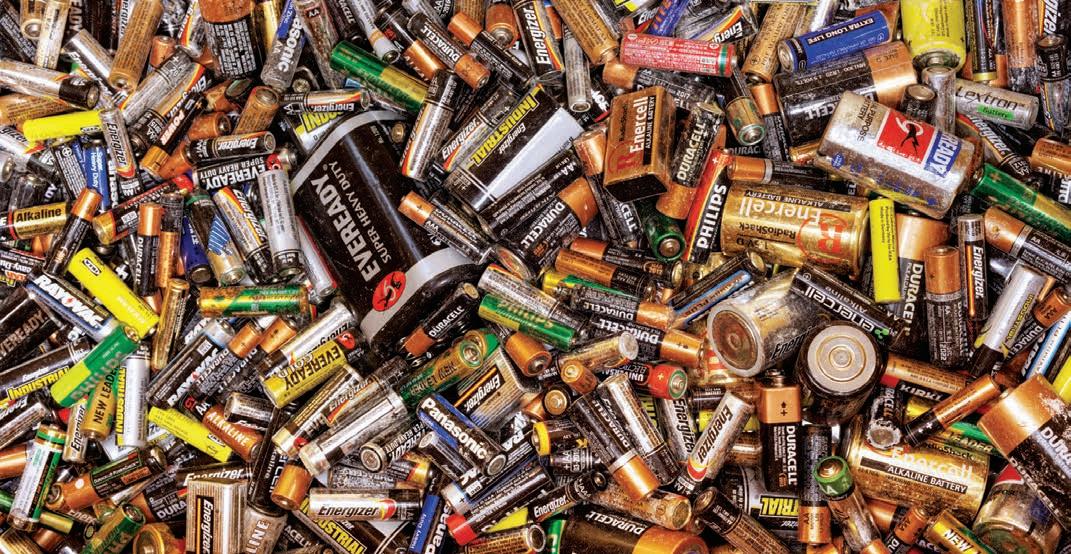
Lithium-ion battery technology is foundational to almost every piece of technology Australians use in their day-today lives. However, the safe recycling of these batteries poses a challenge for the resource recovery industry in Australia –one Jonathan says is still in its infancy.
“Batteries have been a problem in recycling for donkey’s years,” he says. “We’re not just talking about your double A’s and triple A’s. There are so many other aspects to battery recycling that people don’t consider.”
For one, does the average Australian know how to dispose of a dead battery? What about a phone or a laptop? Which bin does it go in? Can it even be recycled?
Jonathan says that, as is true of so much recycling, public education is behind the industry. But the consequences of improper battery disposal can be more serious than an errant plastic container.
“Your strawberry punnet’s not going to burst into flames at a MRF [materials recovery facility],” he says. “But there have been a number of fires over the years caused by lithium batteries.”
Not only that, but old batteries stored in the home can also pose a serious risk.
“It’s something many people don’t realise about the batteries in their phones or their old laptops,” he says. “It’s all well and good when they’re new and being well looked after, but the moment that battery cell starts to deteriorate, it can turn into a bomb. If it’s penetrated and exposed to oxygen, it can ignite and burn quite intensely.”
Jonathan says educating the next generation to treat batteries with the respect they deserve is an important step – but this will still leave the problem of a massive, growing material stream without the infrastructure to keep up.
“There are a range of drop-off points and collection services for spent batteries. But there’s also already more volume than
FEATURED TOPIC – BATTERY RECYCLING 42 / WMR / April 2023
There are many aspects to battery recycling often overlooked.
there is processing capacity – so I think we’ll need to see more companies focusing specifically on battery recycling,” he says.
POSITIVELY PROACTIVE
It’s a niche pocket of the resource recovery industry that Jonathan says remains relatively quiet, with only a handful of companies in Australia set up to recycle batteries properly. Despite this, he says the work being done by the dedicated few is encouraging.
“In the past, the recycling industry in general has been pretty reactive,” Jonathan says.
“We’ve found solutions for problems, but it’s usually not until those problems are significant – soft plastics and tyres are both good examples.
“With batteries, we can’t afford to have the same problem.”
Working in battery recycling’s favour, though, is the value of the raw materials.
“There is a significant market for it,” Jonathan says. “Lithium still has a high value as a recycled material – though processing it can still be time-consuming.
“However, we do have companies here taking the necessary steps. And they’re not just looking short-term, they’re thinking 20-25 years into the future, and trying to move with the evolution of the product itself.”
Jonathan says another consideration is limiting the reliance on virgin materials for new batteries, now and in the future.
“Mining for any virgin materials is an expensive game, and lithium is up there
as far as cost goes,” he says. “The demand for it as a base product has also grown astronomically over the past 15-20 years, especially with the rise of fully electric cars, which all use lithium-ion technology.
“The industry is now looking at recycling to limit the requirement for virgin materials where it can. That’s the only way we’ll get longevity out of anything – because you can’t just keep digging the stuff out of the ground.
“Eventually, resources dry up – so alternatives need to be found.”
FINE-TUNING
While battery recycling is quite specialised, Jonathan says there is a range of existing recycling equipment that can play a valuable part.
“One positive is that there is already existing separation equipment to support the battery recycling industry,” he says. “We don’t have to reinvent the wheel.”
In terms of the Eriez product range, Jonathan says there is a variety of products useful for processing batteries, including eddy current separators, dynamic pulley separators, suspended permanent magnets, and drum and housing units for fine ferrous separation.

He says that for Eriez, it’s not just about the machinery, but rather how solutions can be fine-tuned to cater to the specific needs of customers. He says this flexibility is core to how Eriez does business.
“In my role, I need to really understand what the customer’s process is – and from there, meet their needs and expectations with our equipment,” Jonathan says.
“There have been instances where we looked at a customer’s needs and decided that our equipment just couldn’t meet their requirements. We’d rather say ‘look, we’ve given it our best shot, but we don’t feel we’ve got what you need’, than supply something that doesn’t do the job they want it to.”
For more information, visit: www.eriez.com.au
www.wastemanagementreview.com.au / WMR / 43
“The industry is now looking at recycling to limit the requirement for virgin materials where it can. That’s the only way we’ll get longevity.”
Jonathan Schulberg Head of Resource Recovery and Recycling Business Development , Eriez Australia
Eriez offers a range of separation solutions to assist battery recycling.
Charging ahead
B-CYCLE HAS HAD AN ACTION-PACKED FIRST 12 MONTHS AND MEMBERS ARE DETERMINED TO FIND MORE WAYS TO GIVE DEAD BATTERIES NEW LIFE.
B-cycle, Australia’s official battery stewardship scheme, always set out to radically disrupt the market.
One year on, and Libby Chaplin, Chief Executive Officer of the Battery Stewardship Council, says this is well underway.
Within its first year of operation the scheme has collected 1.9 million kilograms of batteries – equivalent to 81 million AA battery units. It launched with 2300 drop-off points and now numbers more than 4000, with 285 organisations involved in the collection and recycling network.
“It’s quite remarkable,” Libby says upon reflection. “Being the first year we knew there was a lot to do, but we didn’t anticipate it would grow this quickly.
“We always thought the unique leveraging model we opted for was the right one. We’re happy with where we are. We have achieved our goal to disrupt the market.”
B-cycle is about creating a responsible battery life cycle, from buying better
batteries to safe use and convenient recycling to keep batteries and their contents out of landfill.

Designed by industry, authorised by the ACCC, and accredited by the Commonwealth Government, the scheme is funded by a levy on battery imports. While most other schemes have contract arrangements with a collection network, B-cycle opted for an accreditation model for participants at all levels. Members also agree to give purchasing and supply preferences to others in the network.
Libby says this has meant the collection and recycling network is an open process and has allowed quicker engagement with the market.
“I think it’s a nice blend between having the authority that provides regulatory framework but allowing industry to design, implement and improve to create something that really works,” she says.
There’s been lessons learned along the way. There’s an adage: it takes a community to build a village, and Libby says that’s been the case with B-cycle.
Taping Batteries
Taping batteries not only prevents a fire but can save a child’s life. Tape both terminals - for button batteries this is each side - and B-cycle them instead

Members have worked closely with B-cycle to help understand on-theground realities of the scheme and adjusted accordingly.
Libby believes the scheme is working for the good of everyone
FEATURED TOPIC – BATTERY RECYCLNG 44 / WMR / April 2023
B-cycle urges Australians not to put batteries in kerbside bins.
involved but there are improvements to be made.
“We’re still refining the scheme process to be more efficient on the ground so we can really understand where the difficulties might be and where we need to focus our attention for improvement,” she says.
“One of the emerging challenges has been the increasing number of fires in general waste and kerbside recycling collections, as a result of inappropriate disposal of batteries. Consumers now have a convenient alternative and can find a dedicated battery recycling drop-off point by using the bcycle.org.au website.”
Libby says a big part of communication now is to never dispose of batteries in kerbside bins, and to encourage the community to tape the terminals of used batteries for storage or drop off.
“Taping with non-conductive tape such as clear sticky tape or electrical tape doesn’t eradicate the issues but it does help, particularly in the case of button batteries where a little bit of tape can not only prevent a fire but can save a child’s life by making the battery less attractive to swallow,” she says.
Libby worked in the United States for 15 years, specialising in electronic waste. She says internationally,
protecting battery terminals is standard practice. Making it part of the B-cycle message is a small action that can have a big benefit.
Another action capable of a big impact is traceability.
The battery recycling industry has come a long way in the past year in understanding the value of traceability and is in a better position to know where batteries are coming from and having traceability to their end-of-life.
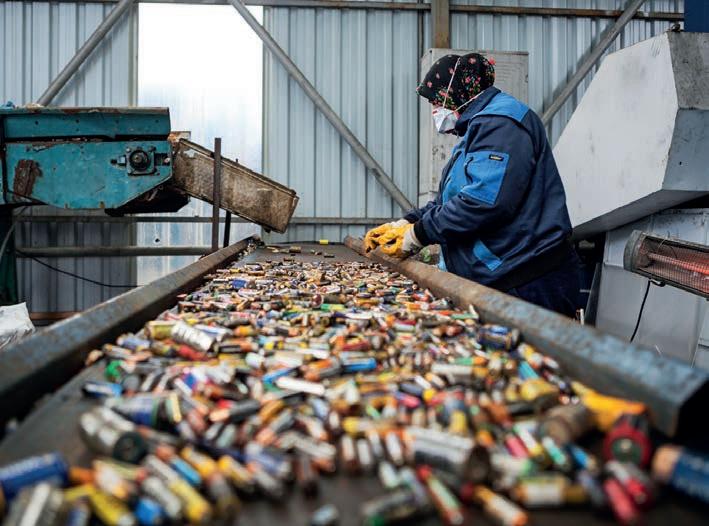
Libby says the scheme represents an important opportunity to build capacity
within the industry to prepare for emerging waste streams such as batteries from electric vehicles and energy storage systems.
B-cycle is in discussions with the Federal Chamber of Automotive Industries and the Motor Trades Association to ensure an effective stewardship model is delivered for that sector.
“We want to understand where the challenges and opportunities lie, what support is needed to build capacity and provide solutions into the future,” Libby says.
Likewise, B-cycle is working now to ensure there are good collection options for light mobility batteries such as those used in e-bikes and e-scooters.
“It’s a new stream but will be growing exponentially,” Libby says.
“At the moment, Australians are buying enough batteries to circle Earth 2.3 times, by 2050 it’s estimated to be 37 times. It’s essential to build industry capacity and raise awareness in the community.”
For more information, visit: www.bcycle.com.au

www.wastemanagementreview.com.au / WMR / 45
The processing journey of recycled batteries. (Positive Charge 2022)
In its first year B-cycle has collected 1.9 million kilograms of batteries –equivalent to 81 million AA battery units.
Pure intentions
PURE ENVIRONMENTAL IS BREAKING THE MOULD WHEN IT COMES TO BATTERY RECYCLING, WITH A NEW STATE-OF-THE-ART FACILITY IN VICTORIA.
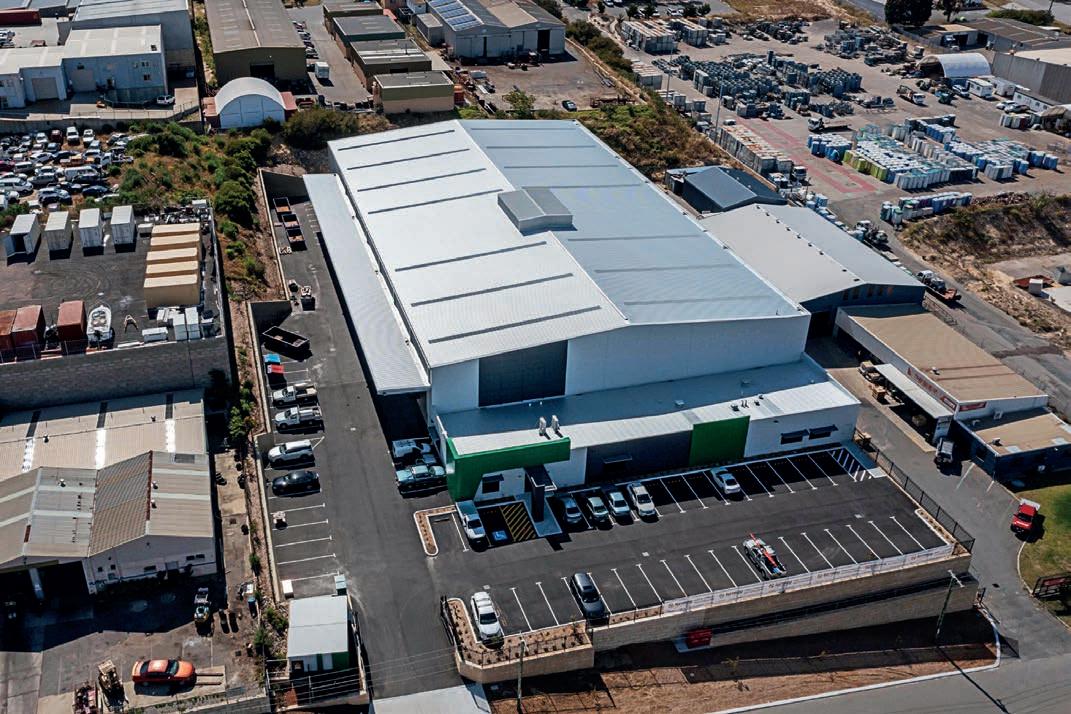
The world is undergoing one of the most significant energy transformations in history with the transition to renewables, says Dr Karl Baltpurvins, Chief Executive Officer for Pure Environmental.
To support this transition, he says society will need to adopt innovative means of storing energy, including batteries that will be used to power all manner of appliances and electric vehicles in the future.
Lead-acid is the oldest rechargeable battery in existence, invented by the French physician Gaston Planté in
1859. Lead-acid remains the dominant battery chemistry used in the world today and, Karl says, will continue to play a role in providing safe and costeffective energy storage as other battery chemistries such as lithium and nickelbased systems are adopted.
He says those who forecast the demise of lead-acid batteries in favour of longer-lasting and faster-charging lithium-ion batteries, may have been too quick to judge.
Even with an increasing consumer uptake of electric vehicles, lead-acid batteries are commonly used to run
the electrics because they are cheaper, have high temperature performance, a proven supply chain and recyclability.
That’s where Pure come in.
Pure’s vision is to transform the circular economy through advanced resource recovery. It specialises in the treatment of regulated waste types generated by a range of industry sectors.
As Karl explains, it’s not a traditional waste management operation.
“We’re focused on waste processing rather than collection,” he says. “We want to minimise the environmental impact of regulated waste.
FEATURED TOPIC – BATTERY RECYCLING 46 / WMR / April 2023
Pure will build a fully automated, best-practice battery recycling facility in Gippsland, Victoria.
“Recycling of used lead acid batteries (ULAB) is a good story. We can recover 98 per cent of a battery. The resources are regenerated, rejuvenated, and turned back into a new product.
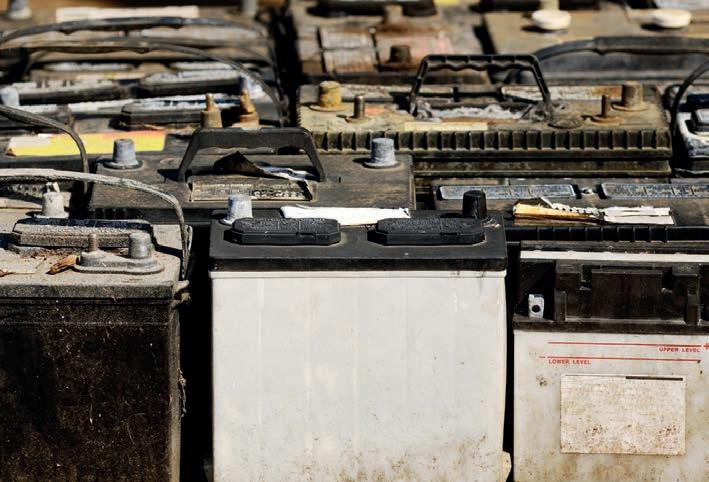
“We’re closing the loop with an onshore solution.”
Pure’s investment in Nexus, a battery breaking facility in Western Australia, does just that. Nexus is licensed to process about 30,000 tonnes of ULAB per annum – more than the entire number of used lead acid batteries generated in Western Australia annually.
All components recovered are sent downstream to refiners and recyclers for recovery and reuse.
Pure is extending its reach to Victoria, constructing a fully automated, best-
practice battery recycling facility in Hazelwood, Gippsland, to process and recover lead bullion.
Karl says the Hazelwood facility is waiting on construction approval and is aiming to process 50,000 tonnes per annum, when fully operational.
Recovered lead will be refined into high purity metals or bullion, filling a gap in the market.
“At the moment a portion of Australia’s lead from ULABs is exported because there’s not enough capacity to refine the lead grid and paste onshore,” Karl says.
“We’re providing a solution that will provide that capacity and keep manufacturing within the La Trobe Valley and Australia.”
Almost all components in ULABs can be separated and remanufactured. The recycling process involves breaking down the batteries and recovering parts for reuse including metallic plates, plastics, lead paste and acid electrolyte.
The lead can be melted down and made into ingots and used to make new batteries or other construction and industrial products. Plastics from the casing can be made into pellets and reused in manufacturing.
Karl says ULABs are a tradeable commodity and will continue to be for some time.
“There is a perception that lead acid batteries are on the way out because of electric vehicles, but that’s not the case,” he says.
“ULABs are still relatively low-cost compared to other batteries. They offer a more economical and reliable alternative in back-up situations where weight and recharge time are not limiting factors. Combined with the supply shortage of lithium-ion batteries, lead acid batteries are being seen as part of the solution.”
The Pure Hazelwood facility will have ultra-low emissions, high recovery and best practice technology based on what is being used by one of the world’s largest lead-acid battery recyclers.
Karl says they’re aiming to reduce greenhouse gas emissions by 34,937 tonnes per annum – the equivalent to removing 8000 internal combustion engine cars from the road each year.
“We’re very socially oriented,” he says. “Our work practices are focused on environmental and social governance. We want the plant to exceed environmental best practice and provide another solution for the recycling of lead acid batteries in Australia.”
For more information, visit: www.purenv.com.au
www.wastemanagementreview.com.au / WMR / 47
“Recycling of used lead acid batteries is a good story. We can recover 98 per cent of a battery. The resources are regenerated, rejuvenated, and turned back into a new product”
Dr Karl Baltpurvins, Pure Environmental Chief Executive Officer
Lead acid batteries will continue to play a role in society for some time.
Solar flair
RESEARCH BY A MELBOURNE-BASED TEAM IS THE CATALYST FOR A FIRST-OF-ITS-KIND PV UPCYCLING FACILITY IN THE STATE, WITH PLANS TO EXPAND ACROSS AUSTRALIA.
Households across the nation have embraced solar power in the search for more renewable energy. However, the uptake has created a looming waste management issue as solar photovoltaic (PV) modules reach their end-of-life.
PV module recycling and upcycling has become an emerging market, grabbing the attention of academia and industry, worldwide. The International Renewable Agency estimates the value of these materials to be about $21.5 billion by the year 2050.
In Australia, solar panel recycling company ElecSome is rolling out a first-of-its-kind PV upcycling facility in Victoria to transform solar panel waste into new products used in the construction and manufacturing industries.

In October 2022, Neeraj Das, ElecSome Managing Director, launched SolarCrete – the world’s first premixed concrete made from glass fines sourced from solar panels to replace natural sand.
“This really puts Australia ahead of everyone else to find an environmentally friendly process for upcycling PV modules,” Neeraj says.
“Our technology is derived out of a set of patented processes that enable the efficient recovery and transformation of solar panel components into valueadded products.
“It highlights how a circular economy may be realised based on the technical and commercial feasibility of solar panel upcycling.”
ElecSome is a start-up established to commercialise the outcomes of a collaborative research project by the University of Melbourne, RMIT University and Melbourne-based company OJAS, to maximise resource recovery and reclaim the valuable materials of PV modules such as clean glass, silicon cells and polymers.
The project originally got underway in 2020 with a $3 million Federal Government Cooperative Research Centre grant to OJAS.
Dr Ylias Sabri, a material scientist leading the team from RMIT University, has been working on applications for nano materials across many industries. He says the PV research was an opportunity to use his
background to help solve an industry and environmental challenge.
He says the drive behind the research was to find a solution that was environmentally safe, affordable, and feasible within Australia.
Twenty to 30 years ago solar panels were made rigid to ensure they didn’t degrade, but there was never any thought about their endof-life.
Ylias says landfilling solar panels can result in heavy metal leaching, which is why they have been classified as e-waste and banned from landfill in many states. Burning the panels to recover the materials releases fluorocarbons into the atmosphere.
FEATURED TOPIC – SOLAR PANEL RECYCLING 48 / WMR / April 2023
Anthony McGregor, Acting Head of Division, Science and Commercialisation, for the Department of Industry, Science and Resources, launches SolarCrete at All Energy Australia in 2022.
“We wanted to develop a sustainable, non-toxic method of dismantling solar panels into compartments.”
The research has revealed that PV glass fines – small glass particles generated from grinding the glass – can be used as a partial replacement for sand in concrete.
Dr Massoud Sofi, the project’s research lead from The University of Melbourne, says this application can conserve raw materials used for concrete production and reduce its carbon footprint.
The production of concrete is one of the largest sources of carbon pollution, responsible for about eight per cent of emissions globally. Depletion of sand in the streambed and along coastal areas is also causing ecological issues.
SolarCrete is seen as one solution to alleviate reliance on virgin materials. The product was launched at the All Energy Australia conference in Melbourne in October 2022 and is currently being commercialised.

Massoud says the process needs to comply with Environment Protection Authority limits on heavy metals and comply with the Australian Standards, as construction material.
Ylias is also investigating refining the recycled materials of PV modules for possible reuse in solar panel production and looking at the processing of ethylene vinyl acetate (EVA), a material that has good radiation transmission and low degradability to sunlight.
ElecSome is taking the research into the real world with the PV module upcycling facility. A site lease in Kilmany, Victoria was secured in June 2021 and the separation technology equipment is being built in Victoria to be commissioned and operational before June 2023.
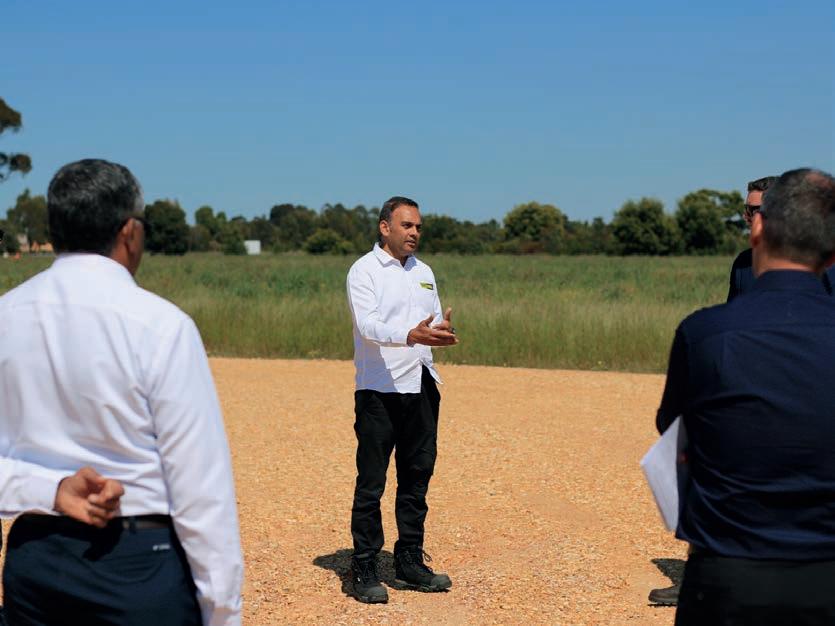
ElecSome aims to expand the solution across Australia. A site has also been secured in New South Wales, with the potential of a third in Perth, Western Australia. A nationwide collection network will also be established to co-ordinate the stream of end-of-life PV modules, with the aim of minimising labour and transportation costs related to the collection process.
Ylias says that taking a research project to patent stage and commercialisation within three years is a big achievement. He says that when the project started the team had reviewed other research and literature on the subject and had a plan for its own solutions but that evolved as the research continued.
“We had a solution in the first year of the project, but we couldn’t make it feasible at industrial scale,” he says.
What gave the team a competitive edge is the combination of scientific support from different disciplines.
“It was people from all sides coming together. This is just one problem in the world, imagine what we could do for all the other problems in the world if we tackle them with the same mindset.”
For more information, visit: www.elecsome.com
www.wastemanagementreview.com.au / WMR / 49
Neeraj Das outlines plans for the Victorian PV upcycling facility during a site visit.
Martin Dent, Massoud Sofi, Priyan Mendis, Anthony McGregor, Neeraj Das, Ylias Sabri, Sujeeva Setunge, Mark Cassidy, Lu Aye, and Felix Kin Peng Hui.
Rise and shine
BLUE PHOENIX GROUP IS HELPING AUSTRALIA’S ENERGY-FROM-WASTE INDUSTRY TAKE ITS FIRST STEPS TOWARD A CIRCULAR ECONOMY.
“We see a future in which waste-toenergy plants are fully circular.”
Blue Phoenix works with operators to create manufactured aggregates that comply with the country’s local needs. The company has developed a range of dry and wet processing solutions to ensure the right quality output in line with local legislation.
Ian says that in most European countries, IBA aggregates are used in road construction and provide a sustainable alternative to primary aggregates.

Blue Phoenix Group believes there is no such thing as waste. Taking its inspiration from the mythical phoenix rising from the ashes, the global company has developed solutions for energy-from-waste (EfW) plants to recycle the seemingly unrecyclable.
Ian Lynass, Managing Director Blue Phoenix Australia, says it’s judicious that the company’s “best in class” technology is introduced to Australia as the local EfW market takes flight.
“Energy recovery is an effective way to manage waste and provide baseload power,” Ian says. “We’ve contributed to the EfW industry globally by preventing landfilling of the incinerated bottom ash (IBA) and reducing the need for virgin raw materials by producing manufactured aggregate.
“By bringing our experience and knowledge to Australia we can help build a sustainable future in a new continent.”
Australia’s first energy-from waste facility is currently being constructed in Western Australia. In 2021, Blue Phoenix secured a 25-year contract with Avertas Energy to
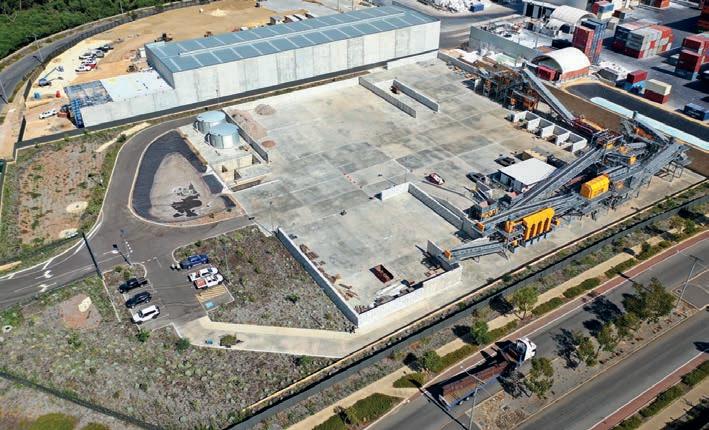
build the country’s first IBA processing facility. The $11.3 million project at Hope Valley in Kwinana is the first in the world to bring all Blue Phoenix technology together in the one plant. Testing material was being recycled through the IBA plant weekly earlier this year in preparation for full-scale productivity.
When commissioned, the plant will process 100 per cent of the IBA – about 80,000 tonnes per annum – from the EfW plant, recovering metal down to minus two millimetres and returning the residual aggregates into bound and unbound civil applications.
A majority of incinerator bottom ash consists of inert brick, rubble, glass, ceramics, and stones. It’s traditionally buried at a landfill site. Ian says Blue Phoenix technology provides an alternative and sustainable solution that closes the recycling loop for EfW plants.
“We see materials to construct buildings, highways and pavements,” Ian says. “We see materials for new cars, computers, and mobile phones.
A large-scale facility in Assendelft, a town in the province of North Holland, Netherlands, is processing about 250-275 kilo tonne of IBA each year, with the potential to process 600 kilo tonne per annum. After metal separation and removal of contaminants, about 450,000 tonne of secondary aggregates finds its way back into the circular economy.
“Blue Phoenix IBA plants produce a material that is well known and well regarded,” Ian says. “There are some areas where we operate that struggle to produce enough material to keep up with the market demand.”
In the United Kingdom, incinerator bottom ash aggregate (IBAA) has been used for more than 20 years as a construction material.
Ian says IBAA gives customers a costeffective, low carbon and sustainable alternative to primary aggregates.
“Blue Phoenix has processed more than 13 million tonnes of IBA to date and works closely with regulators to ensure environmental protectors are at the forefront of day-to-day activities,” he says.
Australia is at a turning point in allowing energy recovery from non-recyclable waste. Ian believes the next step is creating a
WASTE MANAGEMENT IN ACTION – INCINERATOR BOTTOM ASH 50 / WMR / April 2023
Testing material is being recycled through the IBA processing facility at Hope Valley.
regulatory pathway to ensure the resultant aggregates are used responsibly.
He says Blue Phoenix is working with government departments, agencies, and customers to help evolve regulation and support the development of sustainable onshore aggregate markets.

Paul Knight, Chief Executive Officer Blue Phoenix Group, says that over the years, the company has developed both technology and knowledge to ensure that IBA is used correctly and appropriately.
“We take this responsibility very seriously and as such we firmly believe that appropriate regulation is in place to ensure compliance is adhered to,” Paul says.“This is not only something we believe is the case for IBA reuse, but for all recycled products, including construction and demolition waste. We need to ensure that material is suitably tested and used in the right areas and for the right reasons.”
Ian says Blue Phoenix constantly improves and adapts to local demands and legal requirements. The company research and development team devises new applications for IBA to ensure that nothing goes to waste.

The latest development, Urbyon, converts IBA minerals into a binder filler for concrete. The filler can substitute up to 25-30 per cent cement in most concrete and is tipped to help the

precast concrete industry reduce the environmental impact as well as the costs of concrete products.

Ian says the breakthrough will contribute to a decrease in greenhouse gas emissions.
“We see a future without waste,” he says. “Building a sustainable future takes a little magic.”
For more information, visit: www.bluephoenix-group.com
JCB WHEEL LOADERS 1300 522 232 jcbcea.com.au PROVEN RELIABLE AND PRODUCTIVE
Blue Phoenix has a global footprint for IBA solutions.
The JCB range of wheel loaders are built to be strong, reliable and provide comfort for long days in the cab. Designed for ultimate productivity, and offering superb performance the JCB wheel loader range features best-in-class comfort, visibility, safety ergonomics and superior serviceability plus a whole lot more.
Recycling revelations
RECYCLESMART LOOKS BEHIND THE CURTAIN OF TWO PARTNERS TO HIGHLIGHT WHAT HAPPENS TO THE WASTE IT COLLECTS.
of waste collected. The website also provides insights into what happens once recyclables are collected with video content from recycling facilities and other agencies.
“We really think the recycling industry is just one piece of the circular economy puzzle,” Eugenie says. “If we can showcase things that happen behind the scenes it might make more sense to people.”
She says partnerships are vital for key streams of recyclables to ensure that goods collected have a new purpose.
Education around reuse and recycling is not enough to drive Australia’s push toward a circular economy, says Eugenie Alonzo.
The Chief Marketing Officer of ondemand recycling service RecycleSmart, Eugenie says the community also needs to be convinced their recycling is making a difference.
“Australia’s recycling is not perfect, but it is working and is a key element to get to the circular economy that we’re all striving for,” she says.
“We need to drive change, but we also need to bring trust and transparency to recycling and explain what happens beyond the things collected.”
In 2018, on the back of China’s decision not to accept certain recyclable materials from Australia, a University of New South Wales Sydney survey found people were losing confidence in recycling. The survey found that 64.5 per cent of people across all states and
demographics believed the recyclables they put out in their council bins ended up in landfill and 72.4 per cent of people would recycle more if the material was reused.
In the past five years a lot of work has gone toward Australia taking responsibility for its own waste, including the introduction of a national waste plan with targets for both the amount of waste produced and materials recycled.
But Eugenie says there is more work to be done to build trust within the community.
RecycleSmart works with local councils to provide an on-demand, free pick-up recycling service to residents, bridging the gap between residents and available drop-off locations within local government areas.
The company captures real-time data including weight, number of bags, type of resources collected and volume

Recently, RecycleSmart began a partnership with APR Plastics to offer a soft plastics recycling solution to residents in 14 Sydney council areas. The initiative is in response to the suspension of the REDcycle national collection service in November 2022.
Eugenie says the partnership is an example of a true loop for waste materials.
RecycleSmart will collect the soft plastics from participating councils and arrange transportation to APR Plastics’ facility in Victoria. Once shredded, the soft plastics will be fed into a machine that uses pyrolysis (elevated temperatures with no oxygen). Once transformed into an oil, it will be on-sold to VIVA Energy to be turned back into flexible food grade plastic packaging.
Manufactured in Germany, the selfsufficient and zero-waste system is a first of its kind in Australia.
Darren Thorpe, Managing Director of APR Plastics, says the “plastics-to-oil” process has been widely adopted and successfully used in Europe for more than 10 years.
WASTE MANAGEMENT IN ACTION –TRANSPARENCY 52 / WMR / April 2023
RecycleSmart has partnered with Upcycle 4 Better to ensure a circular economy for recyclable textiles.
“It is time for Australia to advance and build a true circular economy. Let’s capture the 70 billion pieces of soft, scrunchable plastics used here each year and turn it into a unique opportunity,” he says.
The APR plastics-to-oil process has been four years in the making and is gaining momentum. Darren says the company has learned a lot from a pilot project and is keen to start producing oil.
“The partnership with RecycleSmart will provide a small but consistent base of feedstock in the Sydney market with potential for growth,” he says.
“We are excited about this partnership, there is immense potential with this project. We want to help tackle this big problem by providing a viable and innovative solution. We are keen to roll out future initiatives Australia-wide.”

Roxy Uzureau Zhu is tackling another big waste problem – textiles. She’s the Australian Lead and Head of Textile Recovery Partnerships for Upcycle 4 Better, a network of global systems to make the best use of textiles.
Upcycle 4 Better has partnered with RecycleSmart to ensure a circular economy for recyclable textiles that are not acceptable at charity stores. Roxy says Australia lacks manufacturing infrastructure for textile recovery and
the public has leant on the charitable sector for the resale or disposal of unwanted goods.




While charities have been the backbone of textile collection, and will continue to play a valuable role, they are built for social good, not necessarily textile recovery for environmental purposes.
Upcycle 4 Better’s ISO-accredited Malaysian sorting facility breaks down and sorts discarded textiles into 500 categories that are then on-sold for remanufacture.
Roxy says it’s important the material recovered is reused at its highest value.
“Everything that can be reworked we try and find a market for it,” she says. “It’s the best option because we don’t have to use more resources to break it down further.”
If a recovered textile can’t be reused in its original form, Upcycle 4 Better will look at industrial use for it. For example, one recycler can use recovered cotton to make rugs, another makes rubber crumb from old shoes.
The cement industry is the last resort for materials that are so complex there is no other solution.
Roxy says the RecycleSmart partnership is a convenient solution for people who don’t want to go to a charity
shop, only to find out half of their donation is not acceptable.
“When RecycleSmart said they were open to finding different streams for difficult-to-recycle waste it made sense,” Roxy says. “Our priority will always be to reuse textiles in as many ways as possible that contribute to sustainable solutions and benefit communities globally. From fibre production to finished good retail, the textile supply chain is a complex global dynamic.
“While there is no country that can manage the complete scope of activities across categories within its own borders, all participants can ensure the proper recovery and use of textiles, protect communities and ensure environmental stewardship of finite resources.”
For more information, visit: www.recyclesmart.com

• Socialise with your colleagues during 3 networking events.

• Sign up for our live broadcasts and participate from anywhere in the world!

Be inspired by industry leaders in a learning environment that can be tailored to suit your needs.
There is an option to suit everyone, so make sure you mark your diary and register to be a part of this industry leading event! Numbers are limited so register today.
APR Plastics will convert soft plastics collected by RecycleSmart into oil.
The Coffs Waste Conference is not to be missed by anyone who works in or has an interest in waste management and resource recovery.
• Attend the 3-day conference in person and network with like-minded professionals. • Participate in the Equipment and Technology Expo, hear from our exhibitors and see their equipment in action.
www.coffswasteconference.com.au (02)
program available Supported by: Major Sponsors: Hosted By: Organised by:
6583 8118 | 0474 629 908 Registration and accommodation bookings open and
Crushing compaction
MARTIN HAY AND THE MH EARTHMOVING TEAM BEAT THE DRUM FOR THE TANA H380 LANDFILL COMPACTOR.
Martin Hay has found his niche in the waste management business. Operating out of Gundagai – a regional New South Wales town halfway between Canberra and Wagga Wagga –his business MH Earthmoving Pty Ltd specialises in managing construction and demolition (C&D) waste.
“We run a skip bin business for recycled material from the construction industry, and manage a landfill cell for its disposal,” Martin says. “It’s all material that’s already been recycled before and has reached its end-of-life.”
Given the pace at which much of the waste streams change and evolve, Martin says he’s happy to be working in a relatively stable and predictable part of the sector.
This meant when it came time to purchase a new landfill compactor for the business, he had a clear idea of what he needed.
After trialling a few different machines, he chose the Tana H380, a 38-tonne compactor which was delivered by Australian Tana distributor GCM Enviro in December 2022.

For the size of the landfill cell he was managing, Martin knew he didn’t need to go overboard on the size of the machine –but toughness was non-negotiable.
“I was looking for a stronger machine, because we’re compacting pretty robust stuff,” he says. “It’s all non-putrescible, meaning there’s no food or organic waste –it’s just purely C&D.
“What sold me on the Tana compactors is their full-width drums, as opposed to big wheels that leave a gap in the middle. From the trials we ran, we found the Tana gave us about 35 per cent better compaction –and that’s a big difference.”
This full-width drum concept is central to the design of Tana landfill compactors
– a defining feature since the company entered the waste management space with its first compactor more than 50 years ago.
Designed to maximise coverage and eliminate waste extrusion, it helps save on fuel burn and operator hours.


“We don’t have to do as many passes to achieve the level of compaction we need,” Martin says.
“This also helps with the fuel economy of the machine – it’s probably 15 per cent better compared to other compactors I’ve used. With the price of fuel these days, that’s a pretty important factor.”
Fuel economy is also aided by a Cummins Tier 3 engine (or Tier 4 final on the H380eco model), as well as Tana’s ProTrack information management system, which can provide detailed fuel consumption and operational reports with the optional ProTrack reports feature.
WASTE MANAGEMENT IN ACTION – LANDFILL COMPACTORS 54 / WMR / April 2023
The Tana H-series’ cabin-forward design allows for consistent visibility to the compactor’s blade.
ROBUST COMFORT
With the full weight of the compactor distributed across two drums on a rigid, non-oscillating frame, Tana compactors are designed to deliver an even spread of waste. A low centre of gravity ensures the machine can maintain stability – even on a 50-degree slope.

“That stability was a big part of the decision to go with the Tana too,” Martin says. “We’ve had it on some pretty weird angles, and it’s never been an issue. It’s very stable.”



Martin says the peace of mind this provides is just one part of what makes the Tana H380 so popular with his operators.
“The operators love the machine,” he says. “They really can’t fault it, to be honest.

“The controls and the visibility from the cabin are second to none. Basically,
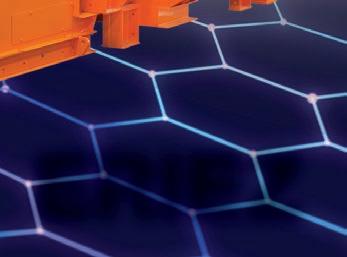

the only place you can’t see is through the floor.”
The H-series’ cabin-forward design also enables consistent visibility to the blade, and its pressurised, heat, and soundinsulated cabin is also critical, especially given the nature of the C&D waste MH Earthmoving deals with.

Martin says among the most crucial factors in his operation, though, is the consistency and reliability of his machinery.

“That’s very important in this industry,” he says. “Especially with a compactor that’s running 85 to 90 per cent of a working day.
“If your compactor’s down, compaction levels can get away from you – and it’s critical that we’re keeping any airspace in these landfill cells to a minimum.”
Martin says GCM’s support has given him the confidence that his business is

in good hands. The Tana H380 purchase was his first experience dealing with the supplier, but he expects it won’t be the last.
“Whatever I’m buying, I’ve always really valued after-sale service,” he says. “And GCM has really impressed me.”
For more information, visit: www.gcmenviro.com

613 8401 7400 | Eriez.com.au Recover Ferrous and Non-Ferrous Fines During Battery Recovery Eriez‘ Ultra High-Frequency Eddy Current Separator recovers fine aluminium, copper and other nonferrous fines missed by conventional eddy current separators. Drum-in-Housing
Full-width drums are designed for maximum coverage and fewer compaction passes.
with Rare Earth magnetic roll for weakly magnetic materials.
ERIEZ_ BatteryRecoveryAd_WMR4_23.qxp_Layout 1 2/27/23 10:05 PM Page 1
Eriez equipment provides the recycling industry with the necessary tools to recover mixed metals from comingled waste.
Full circle
TYRECYCLE TAKES ON AUSTRALIA’S OFFROAD TYRES WITH A NEW MULTI MILLION-DOLLAR PROCESSING PLANT
Australia’s first processing facility to recycle offroad tyres (OTR) will be operational by August 2023.
The Tyrecycle facility in Port Hedland, Western Australia, will start to tackle the 91 per cent of OTR tyres that are not currently being collected and recycled within Australia.
It’s one of three new plants scheduled to be launched this year by the global resource recovery leader and is part of a multi-million-dollar commitment to increase processing capacity and capability.
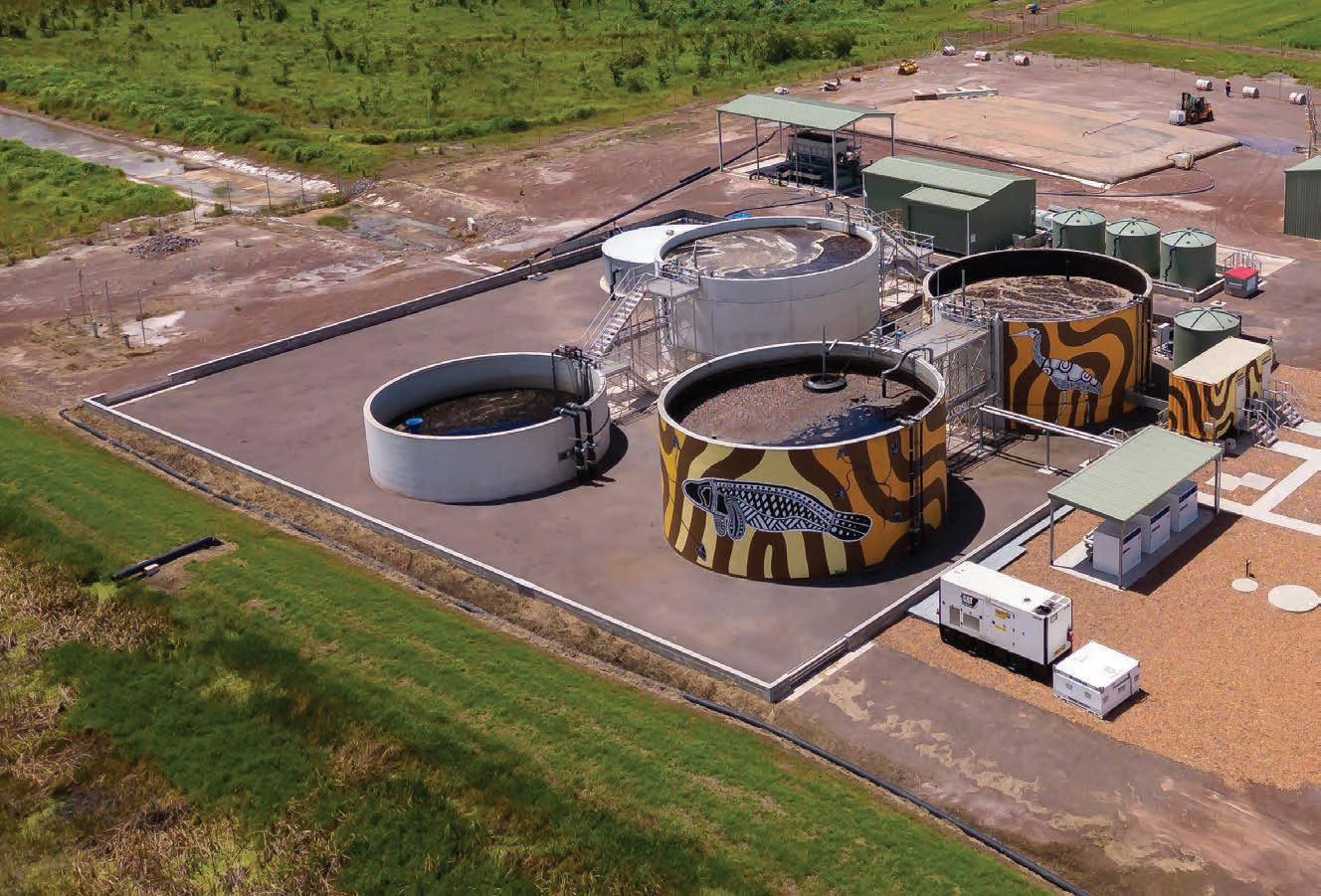
Jim Fairweather, Chief Executive Officer at Tyrecycle, says the expansion demonstrates the company’s preparedness to get on and solve problems for the market.
“One of the key planks of the national waste policy action plan is diversion from landfill,” Jim says. “Nine out of 10 passenger and truck tyres in Australia are already being collected but when it comes to OTR it’s
more like nine per cent. That’s where the issue lies.”
About 30,000, or 25 per cent, of Australia’s mining tyres are in the Pilbara. Jim says Tyrecycle is entering a multi-year agreement with a mining company to take on its OTR waste within the region.
The $10m Port Hedland plant, is expected to arrive in Australia in March 2023 for installation mid-year.
A new $12m plant in Perth, which received $5.2m from the Federal Government’s Recycling Modernisation Fund, is expected to be operational by November 2023. It will give Tyrecycle a third crumbing plant in Australia and will be the company’s most flexible in terms of end-products.

The company is also building a new plant at an existing Adelaide site.
Jim says all of the plants are aimed at increasing the sophistication of the product output so Tyrecycle can attack different markets.
“Perth and Adelaide facilities will
be capable of making a smaller tyrederived fuel (TDF), specifically for Japan, which is a sophisticated market with very particular customers,” he says.
“It means we have greater outlets that give us a greater offtake channels and hence guarantee of services to our collection customers.
“We need to continue to develop our production capability to meet the requirements and demand for the market.”
Jim says that until Australia has a larger domestic market for tyre-derived products, offshore alternative fuel markets will continue to be used to manage tyre waste.
“We have high levels of landfill diversion, but the big question is do we also have circularity?” he says. “We don’t have that in Australia. “We need to create markets. That’s the key fundamental for every waste stream. Unless you have all parts of the supply chain lined up, including the demand piece, we will not get circularity.”
WASTE MANAGEMENT IN ACTION – TYRE RECYCLING 56 / WMR / April 2023
Tyrecycle is entering a multi-year agreement with a mining company to take on its OTR waste in the Pilbara.
He says government procurement is at the crux of providing circularity, but describes the current process as cumbersome, with a disconnect between senior bureaucrats and politicians setting the policy.
He says many don’t have a “recycled first” mentality, are risk adverse, or say the cost of recycled products is prohibitive.
“We’ve got a frustrating situation at the moment where we have huge market potential and we’re not delivering on market growth at all,” Jim says.
“That’s because of a lack of government procurement. When it comes to heavy lifting for roads, it has to be done by government. Nobody else buys roads but government.”
While some niche uses of crumb rubber, such as permeable pavements,
are exciting, Jim says they’re not going to move the dial in terms of dealing with the overall waste problem.
He believes over time there will be tyre-derived products used as high value inputs into more complex industrial environments. Tyrecycle is currently working on a few of those opportunities, including in varied manufacturing environments and even as a nut coke replacement in the smelting process.


Jim says the ability to adapt drives success.
“That’s where Tyrecycle and ResourceCo are so different to many other recycling organisations,” he says. “We look at markets first and then what we need to do to supply those markets.
“We consider ourselves as a manufacturer as opposed to taking a







LEEF SYSTEM®

waste stream, doing something with it, then trying to reverse engineer an outlet for that product.”
For more information, visit: www.resourceco.com.au
Pioneering PFAS Removal from Wastewater 1800 42 62 62 | enquiry@waterandcarbon.com.au
Jim Fairweather, Chief Executive Officer, Tyrecycle.
Sustainable cutting edge PFAS removal Direct PFAS Removal Without Pre-Treatement Zero Chemicals or Consumables Removal to Limit of Detection Low Energy and Operational Requirements Flexible Treatment Capacities Low Waste Stream Below 1% Chat to us today! waterandcarbon.com.au
It’s easy being green
KOMPTECH CEA’S NATIONAL PRODUCT MANAGER DEON COPE TELLS WMR WHY KOMPTECH’S CRAMBO SHREDDERS AND TOPTURN COMPOST TURNERS GO TOGETHER LIKE ROCK AND ROLL.
are especially popular due to their fuel efficiency compared to hydraulic driven variants.
“Once the material has been shredded, it is put into windrows for the composting process,” he says. “That’s where the Topturn comes in.”
Deon says the Komptech Topturn has been well received in the Australian market, which he attributes to the country’s relative abundance of space.
“Windrows require a large area, and we’ve got the space to do it,” he says.

CEA offers the Komptech Topturn in four models: the X4500, X5000, X63, and the X6000, which cater to progressively larger sizes of windrow.
FOGO (food and garden organics), in-vessel composting, and anaerobic digestion are the buzzwords of the organics recycling world these days. As local councils roll out new bins and new rules, Australians are adapting to depositing all sorts of previously landfillbound goodies into their green bins.
Despite this, purely “green” waste streams still have an enormous part to play in the circular economy of the future, whether sourced from local council park and garden maintenance, landscaping, or forestry businesses.
Komptech CEA’s National Product Manager Deon Cope says there is no shortage in demand from organics businesses processing green waste in outdoor windrow operations.
For these businesses, reliable shredders and compost turners are primary tools of the trade. Deon says Komptech’s Crambo shredder and Topturn compost turners
are the industry choice for businesses who need to optimise their composting process, and ensure a consistent, high-quality endproduct.
“The Crambo is Komptech’s main shredder for organics applications, and the company’s most popular shredder on the market for green waste,” Deon says.
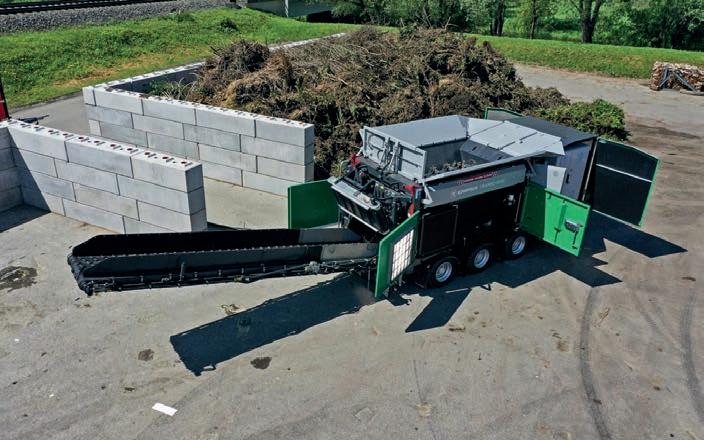
“It features a large cassette that sits below the rotating shafts, and can be fitted with various screens which are easily interchanged to size shredded material according to the desired end-product.”
Deon says the Crambo’s dual-shaft, high-torque, low-speed design makes it unique in the market.
“The benefits of this shredder include reduced operating costs and wear and tear or damage from feedstock contamination like steel or concrete.”
According to Deon, the direct-drive Crambo models such as the 4200 Direct, 5200 Direct, and 6200 Direct
“The larger the size means the wider and higher the row height,” he says. “There is an optimal windrow size when it comes to aeration, moisture content, and management of the rows. The right choice for a customer will ultimately come down to the type and scale of their operation, as well as their budget.
“There are also additional options you can select, from standard cameras to 360-degree cameras to irrigation devices. Irrigation is popular in Australia due to the climate, so we always tend to option them as ‘irrigation ready’, which is also valuable from a resale value point of view.”
IN THE FAMILY
Deon says it has become common for Australian customers to order Crambos and Topturns together – and that there are benefits to doing so.
“Both machines run Cat diesel engines, so you’ve got that commonality
WASTE MANAGEMENT IN ACTION – ORGANICS 58 / WMR / April 2023
The Komptech Crambo’s high-torque, lowspeed design sets it apart in the market.
of parts between the two,” he says. “The same goes for our hydraulic and electric components.

“Shredders and turners are both essential machines for composters, so uptime is critical. Loyalty to the Komptech family allows owners and fleet operators to manage multiple machines through one common telematics platform, Komptech Connect.

“This provides operators with fuel management, service management, and types of usage data, including the ability to monitor machines for any service intervals and fault codes.”
Deon says this can help CEA prepare for a customer’s service needs well in advance.
“We’re trying to get to a point where we can notify the user when one of their machines is 100 hours or so away from their next service, so they can start planning,” he says.
“We’re investing a lot of time and energy into harnessing telematics to be more proactive with servicing and parts. We want to help our customers be as organised as possible.”
In a world still plagued by supply chain issues, Deon says CEA is working towards using machine data to help predict the demand for parts across the country – and stocking up in advance.
CEA is planning for an anticipated rise in demand.
“We’re planning for growth, and we want to be able to support customers by ordering the stock now,” Deon says.
“That way, we’ll have stock on the ground for those customers that need to move quickly. We’re already ordering out to 2024 and beyond, and forecasting to ensure that we can grow with the market.
“CEA has made a firm commitment to Komptech and to the market. We’re here
to take the industry seriously by investing not just in machines, but also in spare parts, training, and people.”
For more information, visit: www.komptechcea.com.au
The Topturn’s four models cater to different sizes of windrow.
Four shades of green
MACEDON RANGES SHIRE COUNCIL HAS ONE OF THE HIGHEST RATES OF DIVERSION FROM LANDFILL IN VICTORIA. DEPUTY MAYOR JENNIFER ANDERSON SHARES HOW THE SHIRE’S RESIDENTS HAVE BECOME WASTE WARRIORS.
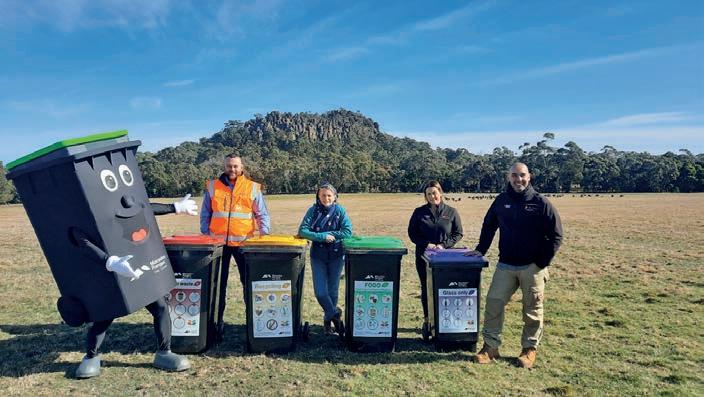
to introduce a separate kerbside glass bin collection service. Since its implementation, more than 4689 tonnes of glass have been recycled.
Jennifer says education and taking the time to get the service right for the community is key.
“It’s not something you suddenly decide at council and off you go,” she says. “You have to look at your community. Different communities will require different solutions.”
Macedon Ranges Shire Council was one of the first councils in Victoria to introduce the four-bin waste and recycling system in February 2020. Within two years of the roll-out, the council has achieved the highest diversion of resources from landfill of any council in Victoria since the system was introduced –with a 74 per cent diversion rate.
The success of the council’s Four Bin System (Let’s Get Sorted) was recognised at the 2022 Waste Innovation and Recycling Awards, taking out the regional category of Most Outstanding Waste and Resource Recovery Project.
The award is presented to a project that has delivered cost-effective and high-impact success in its targeted field.
Jennifer Anderson, Deputy Mayor of Macedon Ranges Shire Council, says it’s an acknowledgement of the commitment by councillors, council staff and the community to embrace the principles of reduce, reuse, and recycle.
“There’s a lot of community champions out there doing it together,” Jennifer says.
“It can be hard work to get your community on board. Other councils have tried stuff and failed but the staff and elected councillors here are really committed to getting as much resource recovery as we can.
“And we’re infinitely blessed by our community. People have embraced the program.”
The Victorian Government is standardising waste and recycling services across the state to improve resource recovery and divert waste from landfill.

The household kerbside service will consist of four colour-coded bins for residents to sort their waste into; yellow for recycling; green for FOGO (food and garden organics); red for general waste, and purple for glass only.
Macedon Ranges Shire was one of the first to transition to the new state system, and one of the first in Australia
Macedon Ranges Shire is in Central Victoria and known as the home of Hanging Rock, a geological formation immortalised by the historical fiction novel Picnic at Hanging Rock
The region covers an area of 1748 square kilometres including native forests, farm zones and townships. Without its own landfill in the shire, the council resolved to reduce waste to landfill wherever possible to manage its emissions and protect the environment.
Jennifer says the Let’s Get Sorted program was rolled out slowly across various areas. Community education was at the heart of the program – before, during and after its introduction.
“You can’t just introduce these programs without doing work within the community,” she says.
“It’s also not just set and forget. We’re continually looking at the program. What’s working? What is going wrong and why?”
Council also has a waste educator on staff whose role is to educate and get feedback from the community and maximise its use.

COUNCIL IN FOCUS 60 / WMR / April 2023
Macedon Ranges Shire Deputy Mayor Jennifer Anderson, second from left, with council staff at Hanging Rock in the Macedon Ranges.
“The education component is really important,” Jennifer says. “You need the community embracing and believing in the project.”
As a result, the council has been able to change its weekly landfill service to fortnightly. Jennifer says a lot of households are only putting landfill bins out for
collection once a month. The recycling system has now also been implemented at Hanging Rock Reserve, to encourage visitors to think about how they dispose of waste and will be rolled out to other public parks.
Developing a reputation as a recycling champion, the shire is also part of a




national Australian Food and Grocery Council soft plastics collection trial.

The 12-month trial, which started in November 2022, involves residents in the township of Romsey putting soft plastics into a separate bag that is then placed inside their recycling bin for collection.
The collected plastics will be processed to be remade into new plastic products.


In a previous trial, residents could take soft plastics to the council’s transfer stations. Collected soft plastics were then processed into pellets for reuse.
Jennifer says it’s important to search for solutions. It’s no good encouraging the community to recycle more if it hasn’t got a useful next life.
She says the council acknowledges there is always going to be a degree of waste generated that can’t be returned or recycled. It is now looking at options for that residual waste.
 The Macedon Ranges Shire Council team, at the 2022 Waste and Innovation Recycling Awards, with Lina Goodman, Tyre Stewardship Chief Executive Officer (third from right).
The Macedon Ranges Shire Council team, at the 2022 Waste and Innovation Recycling Awards, with Lina Goodman, Tyre Stewardship Chief Executive Officer (third from right).





Recognising excellence across the waste, resou rce recovery and recycling sectors. 2023 NOMINATIONS ARE NOW OPEN www.wasteawards.com.au/nominations To nominate visit 25 OCTOBER 2023 SPONSORS HELD IN CONJUNCTION WITH
KOMATSU FOREST, ASTEC PETERSON 2710D HORIZONTAL GRINDER
Since 1981, Peterson has specialised in developing and processing equipment that turns low-grade material into high value products.

The Peterson 2710D is designed for operations requiring high production and frequent moves between jobs. It’s powerful, with a Caterpillar Tier II C18 765 hp (570 kW) engine and has outstanding production throughput for a machine of this size.
The 2710D’s large feed opening, measuring 153cm x 81cm, is ideal for processing odd-sized feedstock. When boosted by Peterson’s high-lift feed roll, the feed opening’s maximum lift of 112cm, is among the largest in its class.
A large grate area enables the 2710D to produce materials to exact specifications, and the quick-change multiple grate system makes it easy to customise grate configurations to produce a variety of finished materials. Grates are removed through an easy-access door on the side wall.
Triple grouser 50cm-wide tracks enable better handling on hills or rocky terrain, maximising productivity.

Peterson’s powerful up-turn three-stage grinding process provides better fracturing of material and a
TUTT BRYANT, M&J PRESHRED 4000M
M&J Recycling’s PreShred 4000M makes it easier than ever to process all kinds of waste in almost any location.
The crawler version has been designed to deliver improved performance and increased efficiency. Drawing on M&J’s experience designing mobile units, the crawler version allows for excellent onsite mobility.
M&J Recycling shredding technology is based on an aggressive knife design and open cutting table, which provides outstanding performance when dealing with mixed and challenging materials.

These key features make M&J pre-shredder units resistant to wear caused by materials and waste normally considered ‘unshreddable’, including solid steel, reinforced concrete and rock.
Throughput can be as high as 100 tonnes per hour, depending on the type of input, the number of knives specified for the cutting table, and the loading procedure.
The rotating knives on the shredder’s two shafts run asynchronously, cutting in both directions to ensure that the input material is constantly in motion – thus preventing bridging and providing maximum shredding capacity.
Every shredded tonne of waste counts at the end of the day, so making the most out of an operation
consistent product, and the patented Impact Release System’s air bags provide uniform grinding and protection from contaminated feedstock, a feature unique to Peterson grinders.
Urethane cushions and shear pins offer a second line of defence, helping to protect the mill from catastrophic damage in the event of impact from contaminants in the feedstock.
www.wastemanagementreview.com.au / WMR / 63
depends on data that can be trusted. Through a remote communication device mounted on the equipment, M&J Metrics provides key operational, maintenance and fuel consumption data.
Contact - Komatsu Forest Pty Ltd P +61 2 9647 3300 E info.au@komatsuforest.com
Contact – Paul Doran, Tutt Bryant P 0417 970 547 W www.tuttbryant.com.au E Paul.Doran@tuttbryant.com.au PRODUCT SPOTLIGHT

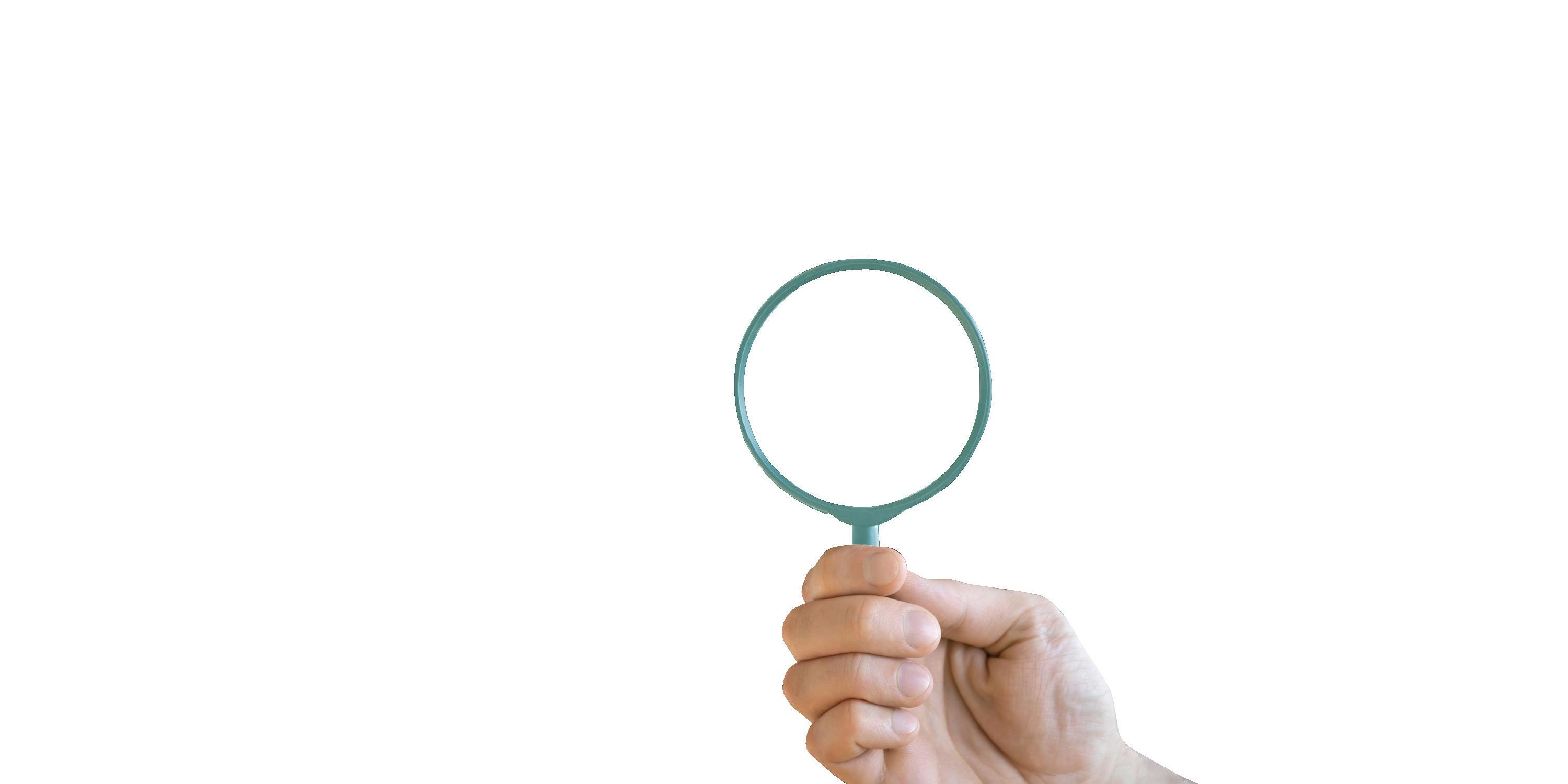
Connecting talent with industry. powered by careerone hiring.wastemanagementreview.com.au ADVERTISE JOBS TODAY
Circle of influence
ORGANICS RECYCLING IS A PERFECT EXAMPLE OF THE CIRCULAR ECONOMY IN ACTION. JOHN MCKEW, NATIONAL EXECUTIVE OFFICER AUSTRALIAN ORGANICS RECYCLING ASSOCIATION,

activities. In practice, a circular economy model implies reducing waste to a minimum. When a product reaches the end of its life, its materials are kept within the economy wherever possible
Eminently sensible, especially when we consider the potential positive contributions including reducing the demand for raw materials that would slow down the use of natural resources, reduce landscape and habitat disruption; reducing harmful greenhouse gas emissions and aid in climate change mitigation; the economic benefits
Furthermore, once I started delving AORA Roadmap, Vision 2031, I discovered a key sentence …. the circular economy works best in organics recycling, because it is, in effect, the industrialisation of a natural process. This makes perfect sense, but then the more I thought about it in the broader sense, I became concerned that we might have missed some important foundation steps to achieving the ideals of a circular economy. For example, what about (circular) collaboration and
EXPLAINS.
(circular) communication/education?
Are they implied within the circular economy model or is there a need to address these needs in advance of believing a circular economy can be derived in their absence?


Effective collaboration and communication/education strategies are vitally important when you have a wide ambit of stakeholders (all with different needs, motivations, etc.), different processes and products, varying end-use needs, etc.
Actually, effective collaboration and communication/education strategies are important whenever you want to introduce change and have that change imbedded. And this is what the circular economy is about – it is about changing how we manage and think about a large number of processes and products that in the past, we took for granted and didn’t think too much about. Afterall, the product life cycle concept has traditionally been a marketing tool, not a circular economy tool.
So where does the Australian organics recycling industry, which AORA (Australian Organics Recycling
LAST WORD www.wastemanagementreview.com.au / WMR / 65
The circular economy works best in organics recycling, because it is, in effect, the industrialisation of a natural process.
Association) represents as the peak industry body, fit into this? As said in Vision 2031, the circular economy works best in organics recycling. It is a great example of what can be achieved through a successful circular economy model if we have effective collaboration and communication/education strategies.
But there is still a way to go in many areas of Australia towards achieving circularity for GO (garden organics), FO (food organics); FOGO is proving to be challenging in some areas.

Producing valuable end-use products from organics recycling such as compost, mulches and soil conditioners, all of which can be extremely valuable inputs to a number of end-use markets, including primary production (i.e., growing food and fibre), parks and gardens and road construction, will be impeded if we cannot ‘tell’ the story of how this is achieved, why it is important
and how everyone involved needs to play a part and how. We need to keep the story simple, but how is the next big question for us to tackle.
For one, I think we need to draw the connections clearly – recycling your organics waste carefully enables a clean feedstock stream for the organics recycling processing industry. The offset of this is that contamination, especially any non-organics, impedes the organics recycling process and can compromise the end product. That is costly to manage and will undermine the circularity.
The actual organics recycling process is largely natural – it uses nature’s own processes to take organic material which will break-down and decompose – using a little time, air, light and from time-totime, a little agitation of the material to turn it over and keep the natural process working effectively.
After a relatively short period of time, organic material has turned from something we once didn’t think too much about throwing into a bin, to a high-quality product that looks like very fertile, rich garden soil and for someone who previously worked in farming/ agriculture/primary production, it looks like a product you could use to grow almost anything with.
Organics recycling is absolutely a wonderful example of the circular economy in action. Instead of organics ending up in landfill, it is processed naturally into a valuable end-use product for another use/life. If we can implement effective collaboration and communication/education strategies in support of organics recycling – draw the linkages between both ends of the process, we have a greatly improved chance of success. That success will ultimately benefit everyone.
66 / WMR / April 2023 LAST WORD
John McKew, National Executive Officer Australian Organics Recycling Association.
Always Delivering on Productivity
The DAF CF 340 FAD has been engineered and built in Australia to deliver a new low tare weight option specifically for the waste industry. With a powerful and efficient MX-11 Euro 6 engine, and featuring a full suite of the latest safety technology, DAF is your perfect waste partner.
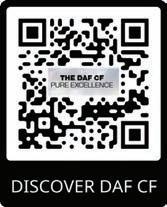

PURE EXCELLENCE DAF CF FRONT LOADER
We love what we do
Right across Australia, REMONDIS supports 24,000 commercial and industrial customers to meet their waste collection, processing, recycling and circular economy ambitions. Since 1982 we’ve grown to 1,100 employees across 39 branches from Gladstone to Wingfield, Henderson to Seven Hills. We have the scale and expertise – both local and global – to make a difference and, best of all, we love what we do.

T 13 73 73 // remondis-australia.com.au






















































































 Suzanne Toumbourou Chief Executive Officer Australian Council of Recycling
John McKew National Executive Officer Australian Organics Recycling Association
Brett Lemin Executive Officer Victorian Waste Management Association
John McCluskey GM Commercial Repurpose It
Suzanne Toumbourou Chief Executive Officer Australian Council of Recycling
John McKew National Executive Officer Australian Organics Recycling Association
Brett Lemin Executive Officer Victorian Waste Management Association
John McCluskey GM Commercial Repurpose It







 Mr Ian Lynass, Managing Director Ianlynass@bluephoenix-group.com
Mr Ian Lynass, Managing Director Ianlynass@bluephoenix-group.com
 Blue Phoenix Australia
Blue Phoenix Australia










































































































